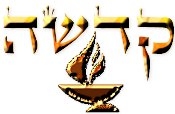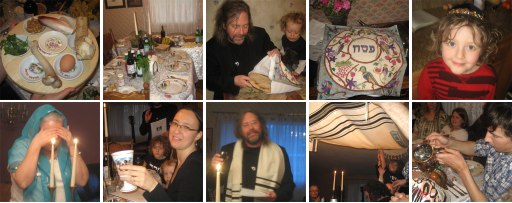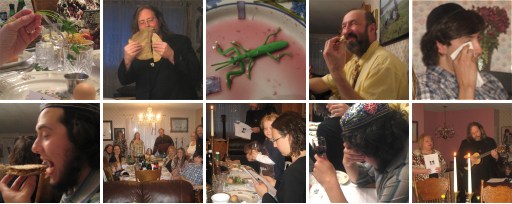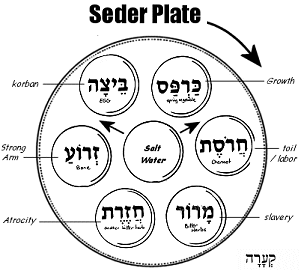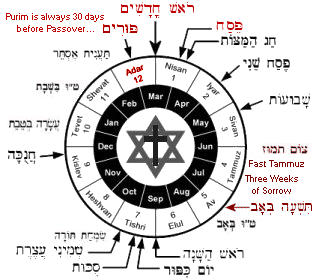|
April 2011 Updates
FREE SEDER GUIDE
Yom HaShoah - יום השואה

[ Yom HaShoah, or "Holocaust Remembrance Day," is on Sunday, April 30th this year... ]
04.29.11 (Nisan 25, 5771) Yom HaShoah, or Holocaust Remembrance Day, takes place on the 27th of Nisan, which this year begins Saturday April 30th (at sundown) and runs until sundown on Sunday, May 1st. Shoah is the Hebrew word for "destruction" and is another name used to refer to the European Holocaust, when six million Jews - including one and a half million children - were systematically murdered by the Nazis during World War II.
We must never forget what happened to the Jewish people, just as we must always be vigilant for political power that seeks to impose fascist control or that seeks to "scapegoat" other peoples for political purposes... Tragically, the underying spirit of Nazi ideology is still operational in this dark and twisted world....
For more information about the Nazi Holocaust, please take a moment and read these pages:
http://www.english.uiuc.edu/maps/holocaust/photoessay.htm
http://www.hanefesh.com/edu/Holidays/Holocaust_Remembrance_Day.htm
 |
Study is Not Enough...
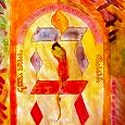
[ The following is related to this week's Torah reading (Kedoshim). Please read the Torah portion to "find your place" here. ]
04.29.11 (Nisan 25, 5771) We are to be "doers" of the Word, and not hearers only, since faith without works is dead and leads to self-deception (lit., "reasoning around" the truth, i.e., παραλογίζομαι, from παρά, "around, beside" and λογίζομαι, "to reason"). Only those who follow through and live their faith will be blessed in their actions (James 1:22, 25). This mirrors Yeshua's statement, "If you know these things, blessed are you if you do them" (John 13:17). The study of Scripture is never enough, since the goal (or purpose) of Torah is the practice of love. Indeed Jewish tradition does not exalt the study of the Torah over the duty to perform "works of love." As it is written in the Ethics of the Fathers, "The world stands on three things: on Torah, on prayer, and on acts of lovingkindness" (Avot 1:2). Likewise, the Talmud recounts that when challenged by a pagan to explain the meaning of the Scriptures "while standing on one foot," Hillel said, "What is hateful to you, do not do to your neighbor: that is the whole Torah and the rest is commentary; go and learn it." Hillel summed up the Torah as "doing no harm" toward others (i.e., the "Silver Rule"), which agrees with the Apostle Paul's statement, "Love does no wrong to a neighbor; therefore love is the fulfillment (πλήρωμα) of the law" (Rom. 13:10).
Abraham Heschel once stated, "When I was young, I admired clever people. Now that I am old, I admire kind people." A clever person is called a chacham (חָכָם) and his ideals are knowledge, intelligence, "sekel," and so on. A kind person, on the other hand, is called a chasid (חָסִיד) and his ideals center on showing compassion and performing works of love.... Many theologians have a problem that is 18" long -- the distance between the head and the heart! If I had to make the choice between the intellect or the heart, I know what I would choose... This is why all the truly great Torah sages regard the Torah's "great commandment" as ve'ahavta lere'akha kamokha (וְאָהַבְתָּ לְרֵעֲךָ כָּמוֹךָ) - "You shall love your neighbor as yourself" (Lev. 19:18; Matt. 22:37-40; Gal. 5:14). Loving others is the goal or "end" of all true Torah, and the practice of love (expressed in acts of lovingkindness) is therefore the final test of whether a person truly understands its intent.
In this connection, it is interesting to note that the gematria for the Hebrew commandment, "You shall love your neighbor as yourself" (i.e., וְאָהַבְתָּ לְרֵעֲךָ כָּמוֹך) equals 820, the same value as the word yekidashti (וְקִדַּשְׁתִּי), "And I [the LORD] will sanctify" (Exod. 29:44). When God commands us to "love your neighbor as yourself," he graciously includes the addendum: "I am the LORD," which the sages understood to mean, "I will help you to do this," or (in this case) "I will sanctify you through your acts of lovingkindness."
Shabbat Shalom and may you be filled with the love of our great God, chaverim!
 |
New Hebrew Meditation:
Reciprocity of the Heart

04.28.11 (Nisan 24, 5771) Today I wrote a brief Hebrew meditation ("Reciprocity of the Heart") based on a verse from the Book of Proverbs: "Whoever pursues righteousness and kindness will find life, righteousness, and honor" (Prov. 21:21). Note the repeated use of the word "righteousness" in this verse. When we pursue righteousness, we will find it, as well as life and honor. As Yeshua said, "Seek first the Kingdom of God and His righteousness, and all these things will be added to you" (Matt 6:33).
The Hebrew verb radaf (רָדַף) means to follow after, or to pursue - as in a chase or a hunt. King David said, "Surely goodness and mercy (chesed) shall pursue me (יִרְדְּפוּנִי) all the days of my life," suggesting that God's love and care would "hound" him as he made his way through this world (Psalm 23:6).
יְהִי־חַסְדְּךָ יהוה עָלֵינוּ כַּאֲשֶׁר יִחַלְנוּ לָךְ׃
ye·hi-chas·de·kha Adonai a·lei·nu, ka'a·sher yi·chal·nu lakh

May your chesed, O LORD, be upon us, as we hope in You (Psalm 33:22)
Download Study Card
New "Table Talk" for Kedoshim
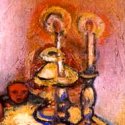
[ The following is related to this week's Torah reading (Kedoshim). Please read the Torah portion to "find your place" here. ]
04.27.11 (Nisan 23, 5771) Today I wrote a new Shabbat "Table Talk" for this week's Torah portion (Kedoshim). Like other Table Talk guides I've written, first I provide a brief synopsis of the Torah reading and then ask a set of discussion questions. I hope you will find it useful for discussing (or reviewing) this week's Torah, chaverim. You can download the page here.
The Battle Against the Lie

[ The following comments and observations are related to this week's Torah reading (Kedoshim). Please read the Torah portion to "find your place" here. ]
04.26.11 (Nisan 22, 5771) We are living in stressful times, chaverim. The Apostle Paul wrote that the time before the "End of Days" would be "perilous" (χαλεπός) and full of human depravity (2 Tim. 3:1-5). In light of the raging spiritual war going on all around us, the following needs to be restated: "The important thing is to not lose your mind..."
The mind is the "gateway" to your heart, and it is therefore essential to guard your thinking by immersing yourself in the truth... Fear is often the result of believing the lie that God is not in control or is unable/unwilling to help you... "Not losing your mind" therefore means being grounded in what is real, and it therefore means understanding your identity and provision as a child of God. God has not given us the spirit of fear, but of power and of love and of a "sound mind" (σωφρονισμός), lit. "self control" (2 Tim. 1:7).
Part of the task of "guarding your mind" is being able to discern between good and evil. "The fear of the LORD is to hate evil (יִרְאַת יְהוָה שְׂנאת רָע); I hate arrogant pride and the evil way and perverse utterances" (Prov. 8:13). As Amos cried out, "Hate what is wrong, love what is right" (שִׂנְאוּ־רָע וְאֶהֱבוּ טוֹב). We are called to love the truth and abhor the lie. Tolerating sin in a world ripe for judgment is a tacit form of "collaboration" with the enemy... Indeed, the only thing regarded as intolerable in the devil's world is the objection that people have a supposed "liberty" to sin. But the LORD is clear on this point: "Those who call evil good and good evil are as good as dead, who turn darkness into light and light into darkness, who turn bitter into sweet and sweet into bitter. Those who think they are wise in their own sight are as good as dead, those who think they possess understanding" (Isa. 5:20-21).
Yeshua said to Pontius Pilate, "For this reason I was born, and for this reason I came into the world - to testify to the truth. Everyone who belongs to the truth listens to my voice" (John 18:38). Our Torah portion this week includes the statement, Lo ta'amod al dam re'ekha: "You must not stand idly by when your neighbor's life is at stake" (Lev. 19:16). The principle of lo ta'amod (לא תַעֲמד) means that we have a moral duty to speak the truth when others are victimized. "Standing idly by" can therefore mean refusing to come forward with the truth about a situation from fear of the consequences, but it can also mean excusing the sin of our culture and of our friends. "A truthful witness (עֵד אֱמֶת) rescues lives, but the one who breathes lies (יָפִחַ כְּזָבִים) brings deception" (Prov. 14:25). As it is written, "You shall not spread a false report. You shall not join hands with a wicked man to be a malicious witness (עֵד חָמָס)" (Exod. 23:1). It is the truth that sets people free to serve God, but this presupposes the ability to discern how we all become enslaved to deception. "You are to distinguish between the holy (i.e., ha-kadosh: הַקּדֶשׁ) and the common (i.e., ha-chol: הַחל), and between the unclean (i.e., ha-tamei: הַטָּמֵא) and the clean (i.e., ha-tahor: הַטָּהוֹר)" (Lev. 10:10, see also Ezek. 44:23). Just as God separated the light from the darkness (Gen. 1:4), so we are called to discern between (בֵּין) the realms of the holy and the profane, the sacred and the common, and the clean and the unclean. Indeed, the Torah states "God called the light Day, and the darkness he called night," thereby associating His Name with the light but not with the darkness (Gen. 1:5). "For you all are sons of the light and sons of the day. We are not of the night nor of the darkness" (1 Thess. 5:5). We are instructed therefore to wear the "armor of light" (Rom. 13:12; see also Eph. 6:11-18).
We have a moral duty to (humbly) correct others or to confront them about their sins. We must warn others that they too will one day stand before God in judgment of their lives. The Hebrew word tokhechah (תּוֹכֵחָה) means "reproof" and is connected with love. We are to judge with righteousness, using a "good eye" (ayin tovah) and always extend the hand of merit (kaf zechut). As it is written, "Do not hate your brother in your heart, but rebuke your neighbor frankly, so that you won't carry sin because of him" (Lev. 19:17). One of the most unloving things you can do to another person is to wink at their sin or to disregard their high calling before God... A good friend will hold your "feet to the fire" and help you stay honest with yourself... He or she will encourage you to "press on" to realize your true identity as God's child. As it is written in Proverbs: "One who rebukes a person shall in the end find more favor than the one who flatters with words" (Prov. 28:23). Tokhechot may be likened to a good Father's moral correction of a son that leads to life (Prov. 6:23). "My son, do not regard lightly the discipline (musar) of the Lord, nor be weary at his rebuke (tokhechot). For the Lord disciplines the one he loves, and chastises every son whom he receives" (Heb. 12:5-6; Prov. 3:11-12).
We have to be careful about all this, of course, and ask God for great wisdom whenever we seek to offer correction to others. For example, when Nathan the prophet went to King David to confront him about his sin with Bathsheba, he told David the story of the poor man who was robbed of the only lamb he had by a rich man. David was outraged and ordered the perpetrator to be put to death. Only after David had pronounced judgment on the offender did Nathan reveal his parable: Attah ha-ish! "You are that man!" (2 Sam. 12:7). As the Baal Shem Tov remarked, God proceeds similarly with anyone due to be punished for a transgression - by retelling the story of his or her sin in a slightly disguised form, as if it had been committed by someone else. When the person condemns the fictitious sinner, he therefore comes to terms with his own sinfulness and culpability... Therefore we are instructed to judge others with awareness of our own frailty and with kaf zechut - the benefit of doubt extended toward the other person. As Yeshua reminded us, "Do not judge by appearances," but "b'tzedek tishpot amitekha" (בְּצֶדֶק תִּשְׁפּט עֲמִיתֶךָ), in righteousness judge your neighbor (John 7:24, Lev. 19:14). We all have a proverbial "log" in our own eye whenever we attempt to remove the "speck" we see in someone else's (Luke 6:42)... Using an "indirect method" method of communication requires a good deal of wisdom, however, and in general it is a good to refrain from a direct form of rebuke, unless it is (very) clear that the other person understands how much you value and care for them. Above all it must be remembered that it is the role of the Holy Spirit to convict the heart of sin (John 16:18).
Another aspect regarding this topic is confession... "Confess your sins to one another and pray for one another so that you may be healed" (James 5:16). "We are only as sick as the secrets we keep," and yet confiding in another by disclosing our sins and struggles makes us vulnerable. In order to be "corrected" by a friend, we have to trust that we will be accepted... And we have to be honest -- first with ourselves, and then with the trusted other. As Margary Williams wrote in the Velveteen Rabbit: "Generally, by the time you are Real, most of your hair has been loved off, and your eyes drop out and you get loose in the joints and very shabby. But these things don't matter at all, because once you are Real you can't be ugly, except to people who don't understand." It is in this context that correction can be lovingly offered, while there is a shared sense of brokenness and genuine love. Simply "rebuking" others rarely does any good...
Notice that the great commandment to love your neighbor "kamocha" (as yourself) is given in connection with forgiveness. Leviticus 19:18 reads, Lo tikom, v'lo titor (לא־תִקּם וְלא־תִטּר): "You must not take vengeance nor bear a grudge ... but you must love your neighbor as yourself. I am the LORD." As an aside, let rhetorically me ask why the oft-repeated phrase, "I am the LORD" appears after so many of the Torah's commandments (i.e., "You shall do x... I am the LORD")? The sages reply, to remind us that God sees everything and nothing is hidden from His eyes... God knows our heart, chaverim, and perfectly understands our inner intentions. Yeshua, the Word of the LORD, is "sharper than any double-edged sword, piercing even to the point of dividing soul from spirit, and joints from marrow; it is able to judge the desires and thoughts of the heart" (Heb. 4:12).
In light of the madness and depravity of this evil world, it is essential to remember that God is in complete control of all things. He works "all things together for good" to those who are trusting in Him. And "there is no fear in love" (אין פַּחַד בָּאַהֲבָה), especially since we know that ein od milvado (אֵין עוֹד מִלְבַדּו) -- there is no real power apart from the LORD (i.e., He is the only true Power in the universe, despite the menace and threats that mankind routinely inflict upon one another). Indeed, our King the Messiah Yeshua is called Elyon lemalkhei-aretz (עֶלְיוֹן לְמַלְכֵי־אָרֶץ) - the "Ruler of the princes of the earth" (Rev. 1:5) - and that means they ultimately will answer to Him. Despite the madness and schemes of this world, we know that the LORD God Almighty reigns, and therefore we need not be afraid of man or his devices. The call to holiness is a call to act counter culturally -- call upon the Name of the LORD and walk in faith, chaverim!
A Closing Thought: Ultimately the problem we have with "holiness" is that we are decidedly unholy people. This is similar to the idea that the Law is "holy, just, and good," but we are "sold into slavery to sin" (Rom. 7:12-14). But thank God for our Savior Yeshua, who imparts holiness to us and sets us free from the vain attempt to please God through the principle of "self-effort" (1 Cor. 1:30; Titus 3:5; Rom. 8:1-2)! Because of Him, we do not work toward a place of victory, but rather from the place of His victory (1 Cor. 15:57)! Our LORD Yeshua -- the Killer of death; the Slayer of the Serpent; the final Victory of God's awesome love for us! יְהִי שֵׁם יְהוָה מְברָךְ - "Blessed be the Name of the Lord."
 |
Thoughts on Practical Holiness

[ Happy Passover, chaverim! The following is related to this week's Torah reading (Kedoshim). Please read the Torah portion to "find your place" here. ]
04.25.11 (Nisan 21, 5771) Our Torah portion this week (Kedoshim) reveals that the "appointed times" (i.e., mo'edim: מוֹעֲדִים) were given by God to help us turn away from the omnipresent urge within the human heart to embrace vanity: "Every one of you shall revere his mother and his father and guard (שָׁמַר) my Sabbaths (שַׁבְּתתַי)... Do not turn to worthlessness (i.e., אֱלִיל) or make for yourselves any molten gods" (Lev. 19:3-4). In other words, the Biblical holidays - including Shabbat, Rosh Chodesh, and so on - were intended to help us to sanctify ("set apart," "make holy") the times and seasons in order to remind us of God's Presence (Psalm 104:19). Therefore they are called mikra'ei kodesh (מִקְרָאֵי קדֶשׁ), "times in which holiness is proclaimed" (Lev. 23:2). The Torah's declaration that these days are holy implies that they are set apart for special activities, such as commemorating God as our Creator (Shabbat), our Redeemer (Passover), our Resurrection (Firstfruits), our Law Giver (Shavuot), our King (Rosh Hashanah), our High Priest (Yom Kippur), and so on. In this connection it should be noted that it is a mistake to assume that the divine calendar was somehow abrogated with the cross of Yeshua, since all of the Jewish holidays center on Him, and indeed the advent of the Ruach Ha-Kodesh (Holy Spirit) occured precisely after the prescribed 49 day countdown to Shavuot (Acts 1:8; 2:1-4).
One aspect of holiness is a sense of "separateness" from the prevailing culture. Leviticus Rabbah states that God told Moses, "Tell the Israelites that just as I am separate, so you must be separate; just as I am holy, so you must be holy." Likewise the Apostle Paul taught that we are called to be "conformed" (σύμμορφος) to the Messiah, but not "conformed" (συσχηματίζω) to the pattern of this world... The former word means to resemble or be made similar in form (μορφή), whereas the latter is a passive verb that means to accept the world's scheme (σχῆμα) of seeing things.
On the other hand, the duty to walk in personal holiness is not to "opt out" of life in this world by living as a monk or by withdrawing from others as an ascetic, much less having a "holier-than-thou" attitude that prides itself on religious scrupulosity... Yeshua routinely condemned those Pharisees who assumed that the meticulous "laws of purity" intended for the priests during their sacrificial service at the Temple applied to them in their daily life (e.g., some of these Pharisees formed "societies" whose members pledged to eat food only while in a state of ritual purity, to ritually wash their hands, and so on). Yeshua called this the "leaven of the Pharisees" which he said was hypocrisy (Luke 12:1). On the contrary, the Scriptures reveal that holiness is to be lived in the everyday experiences of life, in the context of community. Without humility and love, the practice of holiness is meaningless...
Ultimately our lives "suspended" between two worlds - this phenomenal world with its illusions and the real world of spiritual substance and meaning... We exist in an "already-not-yet" state of expectation and yearning where we must consciously mediate the truth of heaven by bringing it "down to earth." This is a truth war, and by truth I do not mean intellectual knowledge as much as the living truth that marks the lifestyle of a follower of Messiah. We take "every thought captive to the obedience of Messiah..." May God help each of us heed the call to walk in holiness by the power of His love and grace. Amen.
 |
Parashat Kedoshim - קדשים

[ Happy Passover, chaverim! The following is related to this week's Torah reading (Kedoshim). Please read the Torah portion to "find your place" here. ]
04.25.11 (Nisan 21, 5771) Last week's Torah portion (Acharei Mot) concerned the yearly Yom Kippur ritual that purged the uncleanness (tumah) and sin of the people and restored the Sanctuary to a state of purity (tahora). This week's Torah portion continues the theme of purity with the LORD saying to "the whole assembly of Israel" (כָּל־עֲדַת בְּנֵי־יִשְׂרָאֵל), "You must be holy because I, the LORD your God, am holy" (Lev. 19:2). Note that the commandment to speak to the "whole assembly" differs from earlier instructions ("Speak to the Israelites, and say to them..."), which has led some of the commentators to say that these instructions were to be taught to Israel in a more public way (i.e., b'hakel - "in full assembly"). At any rate, the portion lists more mitzvot (commandments) regarding practical ethics than any other of the Torah, thereby directly connecting the holiness of the community with obedience to God's moral truth...
After stating the foundational requirement to be holy, the LORD begins to explain, "Each of you must respect (i.e., yirah: יִרְאָה) his mother and his father, and you must keep my Sabbaths. I am the LORD your God" (Lev. 19:3). The duty to revere (or honor) one's parents recalls the Fifth Commandment (Exod. 20:12), which is the starting point of learning to respect other people in our lives. Notice that the word for "my Sabbaths" (שַׁבְּתתַי) implies both the keeping of the weekly Sabbath as well as the "appointed times" of the LORD. As we will see, sanctifying time is a way we can express practical holiness in our lives...
In this age - not unlike the generation of Noah (when "every inclination of the thoughts of their minds was only evil all the time") - the call to walk in holiness can seem almost absurd, but the Scriptures are clear on the point. And it is a damning indictment regarding the apostasy of our time that many so-called church denominations casually regard holiness as somehow "optional." It is crucial to understand that a follower of Yeshua is not exempt from the call to personal holiness, since the LORD God of Israel is the same yesterday, today, and forever. Yeshua was the Voice of the LORD calling out from the midst of the cloud at Sinai, and God's original plan to redeem a people to make them holy was never called off...
The followers of the LORD God of Israel are to be holy (i.e., kadosh: קָדוֹשׁ), and indeed our Torah portion literally means "holy ones" (i.e., kedoshim: קְדשִׁים). Personal holiness is the "key" that unifies the various laws listed in the Torah, and represents our practical responsibility to "walk with the LORD" (halakhah). In Hebrew, the noun form of "holy" (i.e., kadosh) is kedushah (קְדֻשָּׁה), from the root קדשׁ that means sanctity or "set-apartness." Some other Hebrew words that use this root include Kiddush (sanctifying the wine), Kaddish (sanctifying the Name), kiddushin (the ring ceremony at a marriage), and so on. Kadosh connotes the sphere of the sacred that is radically separate from all that is sinful and profane. As such, it is lofty and elevated (Isa. 57:15), beyond all comparison, utterly unique (Isa. 40:25), absolutely righteous (Isa. 5:16), glorious and awesome (Psalm 99:3), full of light and power (Isa. 10:7), and is favored as God's own (Ezek. 22:26). Indeed, holiness is a synonym for the LORD Himself (i.e., Ha-kadosh barukh hu: הַקָּדוֹשׁ בָּרוּךְ הוּא- "The Holy One, blessed be He").
The idea of holiness therefore implies differentiation: the realm of the holy is entirely set apart from the common, the habitual, or the profane. The holy is singular, awe-inspiring, even "terrible" or dreadful (see Neh. 1:5; Psalm 68:35). As the Holy One (ha-kadosh), God is utterly unique, distinct, sacred, and "set apart" as the only One of its kind. He alone is worthy of true worship and adoration, since He alone is peerless, without rival, and stands in relation to the world as Creator and Lord. Yes, only the Lord is infinitely and eternally Other -- known to Himself as "I AM THAT I AM" (Exod. 3:15).
Holiness, then, implies more than an abstract or indifferent "metaphysical" separation (as is suggested by various forms of dualism), but rather separation from that which is profane (chullin), banal, common, or evil. In other words, holiness implies absolute moral goodness and perfection. It is impossible that the Holy One could condone sin, since this would negate the distinction between the sacred and profane and thereby undermine the nature of holiness itself. The Holy is in opposition to the profane and therefore the LORD must hate and oppose that which violates the sacred.
Various practical mitzvot are given in this Torah portion through which a Jew is sanctified, or set apart to be kadosh - holy - and therefore fit for relationship with God. God is not only "wholly Other" (i.e., transcendent) but also pervades all of creation (i.e., "immanent"), and those who are called into His Presence must therefore be holy themselves. Such practical holiness results in sanctification obtained through the observance of commandments (mitzvot). These commandments include both mitzvot aseh (commandments to do something) and mitzvot lo ta'aseh (commandments to refrain from doing something). In addition, chukkim, or "statutes" are given that further separate the Jew from the customs and profanity of the surrounding nations.
For example, though it is inevitable (and psychologically necessary) that we make judgments about other people, the Torah states, b'tzedek tishpot 'amitekha, "in righteousness shall you judge your neighbor" (see also John 7:24), which implies that we must use the "good eye" (ayin tovah) when we think of other people. Indeed, the focal point and the very heart of what practical holiness represents is stated as v'ahavta l're'akha kamokha - "You shall love your neighbor as yourself." Note that the direct object of the verb (ahav - to love) is your neighbor. But who, exactly, is my neighbor? Some have claimed that the word rea (neighbor) refers only to one's fellow Jew - not to others at large in the world. However this is obviously false, since the "stranger" (ger) is explicitly identified to be an object of our love (Lev 19:34). And note that Yeshua the Mashiach answered this question by turning it around. Instead of attempting to find someone worthy of neighborly love, I am asked to be a worthy and loving neighbor myself (Luke 10:29-37).

The phrase v'ahavta l're'akha kamokha (Lev. 19:18) is considered the most comprehensive rule of conduct toward others found in the entire Torah. The Talmud (Shabbat 31a) tells the story of how Rabbi Hillel, a contemporary of Yeshua, was once challenged by a pagan: "Make me a proselyte, on the condition that you teach me the whole Torah while I stand on one foot." Hillel agreed, and while standing on one foot said, "What is hateful to you, do not do to your neighbor: that is the whole Torah and the rest is commentary; go and learn it." Yeshua likewise said, "In everything, treat others as you would want them to treat you, for this is the point of the law and the prophets" (Matt 7:12). The apostle Paul - who was a student of Hillel's grandson Gamaliel - likewise wrote: "Love (ἡ ἀγάπη) does no wrong to a neighbor; therefore love is the fulfillment (πλήρωμα) of the law" (see Rom. 13:10, Gal. 5:14).
Notice that the commandment to love our neighbor is given in connection with forgiveness. Leviticus 19:18 reads, Lo tikom, v'lo titor (לא־תִקּם וְלא־תִטּר): "You must not take vengeance nor bear a grudge ... but you must love your neighbor as yourself. I am the LORD." In Jewish tradition, "Yom Kippur does not atone until we have made peace with one another." In light of the greater glory of the New Covenant, this may be stated, "the Cross of Yeshua will not avail you unless you are willing to forgive others for their sins against you" (Matt. 6:14-15).
The problem, of course, is not that we don't know what our duty before God is, but rather finding the means to truly live a life of love and forgiveness toward others in this fallen world... But thanks be to God - the Holy Spirit enables us to do the impossible...
 |
The Song of Songs
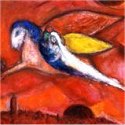
[ The following entry provides a few thoughts about the Song of Solomon, which is traditionally read during the week of Passover.... ]
04.22.11 (Nisan 18, 5771) During the Shabbat of Passover week it is customary to read the ancient "love song" of King Solomon called Shir Ha-Shirim (שִׁיר הַשִּׁירִים), or the "Song of Songs." In Jewish tradition, since Passover marks the time when our "romance" with God officially began, the sages chose this song to celebrate God's love for his people. And since Passover is also called Chag Ha-Aviv, the festival of Spring, the Song is also associated with creativity and hope associated with springtime (Song 2:11-12).
The author of the Song of Songs is King Solomon (מֶלֶךְ שְׁלמה), as indicated by the song's opening verse: "The Song of Songs, written by Solomon" (Song 1:1). Interestingly, in 1 Kings 4:32 it is stated that "He (Solomon) also spoke 3,000 proverbs, and his songs were 1,005." Since the Book of Proverbs contains far less that 3,000 proverbs, it is likely that only his best were selected for the book, and while there is a psalm attributed to King Solomon (i.e., Psalm 72), the only other song we have bearing his name is the great "Song of Songs," which in Hebrew might be rendered "the greatest of songs." The other songs of Solomon, however, have apparently been lost to us...
The Song is usually interpreted as an allegory of the love affair between God and His people. The Beloved (representing God) therefore says, "As a lily among the thorns, so is my love for you among among the daughters;" and the maiden (representing God's people) replies, "Like an apple tree among the trees of the forest, so is my beloved among the young men. I delight to sit in his shade, and his fruit is sweet to my taste" (Song 2:2-3). The Jewish scholar Maimonides argued that the song was intended to teach about ahavat HaShem (אַהֲבַת יהוה), the love of God. The Talmud reports that Rabbi Akiva argued for the inclusion of Song in the canon of the Hebrew Bible by saying that if all the other Books of the Bible are considered to be regarded as "Kedoshim" (holy), then Shir Ha-Shirim must be considered "Kodesh Kodoshim," the Holiest of the Holy (Megillah 7a). Akiva is reported to have further said, "The whole world attained its supreme value only on the day when the Song of Songs was given to Israel" (Mishnah Yadayim 3:5). Rashi agrees and therefore states that all the references to King Solomon (שְׁלמה) in the song refer to the LORD, the King of the Universe who creates peace (שָׁלוֹם) in His high places.
Rashi interpreted the song as an allegory of a young and beautiful woman (the "Shulamite") who becomes engaged to and then marries a king. However, some time later, the woman became unfaithful to him, and the king then sent her into exile to live "as a widow." Despite his heartache, the king's love for her remained constant, and he secretly watched over her and protected her from "behind the shutters." When she finally resolved to return and to be faithful to him alone, the king took her back, with a love that was fully restored. For Rashi, the Jewish people were "engaged" to God when He took them out of Egypt. At that time, Israel pledged love and loyalty to God alone at Sinai (a type of "chuppah" or marriage canopy), but later proved to be unfaithful, first with the sin of the Golden Calf, and then through subsequent acts of infidelity. Indeed, her infidelity proved to be so great that God reluctantly sent her into exile. According to Rashi, the opening verse, "Let him kiss me with the kisses of his mouth, for your love is better than wine" (Song 1:2), is allegorically spoken by Israel in her exile, as she pines away for the former intimacy she once enjoyed with God.
Rashi's interpretation follows the theme of the Hebrew prophets who sometimes refer to Israel as the wife of the LORD. According to the prophet Hosea, for instance, idolatry among Israel is likened to adultery that breaches the marriage contract between God and His people. Messianic believers interpret the song as a picture of Yeshua and his followers, collectively called kallat Mashiach, the "bride of Messiah" (Eph. 5:23, 25), or as a picture of Yeshua as the "Bridegroom of the soul" that personally knows and trusts in His love...
When we read this book in our Bibles, it's important to remember that we are listening to a song, not to a story being recounted... The song is not recited in any sense of chronological order, but rather uses flashbacks and "antiphony" (responsive verses) that come from the Shulamite woman (a Cinderella figure who worked in the vineyards and tended the sheep), the daughters of Jerusalem, the bridegroom, the family of the Shulamite, and so on. Because of this, the Song of Songs has been difficult to interpret, leading Delitzsch to describe it as "the most difficult book of the Old Testament" to understand. Literally interpreted, the song seems unworthy of inclusion into the canon of Scripture, and at times even appears to be written in "bad taste." Why would such ambiguity attend to a Book that is called "the noblest song," or "the crown of all songs" in Hebrew? Why would natural love (alone) be so exalted to be regarded as inspired by the Holy Spirit? Mystically understood, the Song is sung to those who are in a loving relationship with God. It describes the interior meaning of the "Holy of Holies," and therefore is reserved for those who access the sacred region of Divine love, "the secret place of the Most High."
Some people interpret the song as an idealized version of wedded love. A famous verse from the Song is often inscribed on traditional Jewish wedding rings: "I am my beloved's and my beloved is mine" / ani l'dodi v'dodi li (אֲנִי לְדוֹדִי וְדוֹדִי לִי), symbolizing the devoted union of the two lovers... The song speaks of sexual love, but in terms that are holy, not carnal. It should be noted that the allegorical interpretation (i.e., as being about God's love for his people) is stretched when we consider some of the erotic language found in the song, and some commentators warn that we should never mix erotic language with the language of worship... Notwithstanding, the mystics have clearly preferred to regard the song in terms of God's intimate love for the soul, and the various stanzas are thought to picture the Beloved as God who woos the soul.... He (the beloved) brought me to the banqueting house, "and his banner over me was love" (וְדִגְלוֹ עָלַי אַהֲבָה).
One day the mysterious shepherd, who traveled with no sheep, told the woman he was leaving but promised he would return for her. The days passed and she waited, but her family and friends began to ridicule her hope. Nonetheless, she loved the shepherd and dreamed of being with him: "On my bed by night I sought him whom my soul loves; I sought him, but found him not" (Song 3:1). She longed to be with her beloved; she missed him, and dreamed of the day they would be together... There were even strange visitations, a fragrance of her lover in the air, that she could not explain. Surely this longing represents the soul's homesickness for heaven and the Presence of Yeshua... "Make haste, my beloved, and be thou like to a roe or to a young hart upon the mountains of spices."
Some time later, as she was working in the vineyard, she saw a caravan approaching, and the cry went forth: "King Solomon is coming!" (Song 3:6-7). Then someone ran to her and said, "The King is asking for you!" But why would the King ask for her? Because the mysterious shepherd had wooed her in disguise - in "garments of lowliness" - to win her heart before he revealed his true identity (for more on this, see Kierkegaard's parable of the King and the Maiden). The Voice of the Good Shepherd speaks: "Arise, my love, my fair one, and come away; O my dove, you are in the clefts of the rock" (Song 2:13-14). Like the Shulamite woman, we are hidden in the "clefts of the rock," though we are not forgotten. The hope of our salvation is fulfilled in God's love and in our response to that love...
בְּרַח דּוֹדִי וּדְמֵה־לְךָ לִצְבִי
אוֹ לְעפֶר הָאַיָּלִים עַל הָרֵי בְשָׂמִים
be·rach do·di u·de·meh-le·kha litz·vi,
or le·o·fer ha·ai·ya·lim, al ha·rei ve·sa·mim

"Make haste, my beloved! Be like a gazelle
or a young stag on the mountains of spices." (Song 8:14)
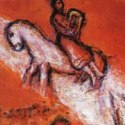
Finally it should be noted that the Song of Songs is sometimes linked to the "lilies" (i.e., shoshanim: שׁשַׁנִּים) mentioned in Psalm 45, which presents a Messianic vision of the Divine Bridegroom and offers an "ode" for a forthcoming wedding. The imagery of "lilies" appears frequently in the Song of Songs, and similar poetic devices are used in this psalm. "Hear, O daughter, and consider, and incline your ear: forget your people and your father's house, and the king will desire your beauty. Since he is your lord, bow to him" (Psalm 45:10-11). Soon the LORD will return for His betrothed, and then we will finally celebrate the great "marriage" with our King...
Postscript: The Five Megillot
The "five megillot" (i.e., chamesh megillot: חָמֵשׁ מְגִלּוֹת) that are traditionally assigned for various Jewish holidays are as follows:
- The Song of Songs (שִׁיר הַשִּׁירִים) is read during Passover Week, in the early spring, to commemorate the "betrothal" of the Jewish people at the time of the Exodus.
- The Book of Ruth (מְגִלַּת רוּת) is read during Shavuot (Pentecost), the time of the spring harvest and the time traditionally associated with the giving of the Torah to Israel. Like Israel, Ruth gave up everything to accept the Torah.
- The Book of Lamentations (אֵיכָה) is read during Tishah B'Av, the traditional date that commemorates the destruction of the Temples, in the summer...
- The Book of Ecclesiastes (קהֶלֶת) is read during Sukkot (Tabernacles) in the fall, usually to counteract the exuberance of the holiday and to remind Israel that even in the most joyous of times, there is need for reflection about the meaning of life.
- The Book of Esther (מְגִלַּת אֶסְתֵּר) is read during the holiday of Purim, in the winter, to commemorate God's hidden hand in saving the Jewish people from disaster.
What's Ultimately Real...
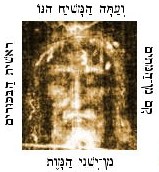
[ The resurrection of Yeshua means that He is available to you *right now* ... ]
04.21.11 (Nisan 17, 5771) The resurrection of Yeshua is the central fact of all sacred history and the world's only hope.... Everything turns on whether we awaken to the risen reality and Presence of Yeshua in our lives. Without Him we are hopeless; with Him we are more than conquerors (1 Cor. 15:14; Rom. 8:37).
There is absolutely nothing more important -- in any possible world -- than your relationship with the Lord God Almighty. As C.S. Lewis once wrote, "God can't give us peace and happiness apart from Himself because there is no such thing...." There is no middle ground here. God gives us a terrible choice: "According to your faith, be it done unto you..." Therefore the great commandment is always, "Choose life," chaverim.
The theistic worldview of Yeshua reveals something far more radical than the "theologically correct" concept that a personal and all-powerful God created the universe and demands obedience to moral law.... Various religious monistic philosophies (including Islam and Judaism) proclaim just this doctrine, though they are careful to dress up the idea of "karma" (i.e., moral cause and effect) using religious code words, rituals, and specific penalties for nonconformity to their respective theological systems. The philosophy of Yeshua, on the other hand, agrees that God is indeed the King and Ruler over all, but it goes beyond the "merely transcendent" to affirm that the Kingship of God extends to all possible worlds - including the realms of finitude, sickness, and even death itself. This is the Absolute Paradox, as Kierkegaard said, wherein the infinite and the finite meet in the mystery of the Incarnation.... This is where God "touches a leper," eats with sinners and prostitutes, and suffers pain and heartache like all other men... The Gloriously great God, the Creator of all the cosmos, has "emptied Himself" to come in the form of a lowly servant (δοῦλος) - disguised to the eyes of the proud and hardhearted, but revealed to those who are genuinely broken and in profound need. The LORD God is God over all possible worlds, and that includes both the celestial realms of the heavens but also the world of the fallen, the ashamed, the alienated, and the lost... God's infinite condescension reveals and augments the majesty of His infinite transcendence. There is no world - nor ever shall there be such - where the LORD God Almighty does not reign and have preeminence...
 |
Flowers seen on Pesach day
The philosophy of Yeshua declares that ultimate reality is personal in a sense meaningful to sinners... The message of the Cross is one of tremendous hope. Yeshua is our Bridge to the Father, the One who heals our sickness and takes away the sting of death. Sin is not rationalized away but rather is taken away by the blood of the Redeemer.... Yeshua will never be of existential interest to those who believe they can earn approval before God through their own good deeds or "good karma." The professors of ethics and religion have always been His most devoted enemies...
Peel away the proverbial layer of the onion, so to speak, and you will find at the center of everything the triumphant visage of One who has donned the clothing of fallen humanity in order to empathize with its suffering and raise it up... The resurrection of Yeshua is the source of our abiding hope: "Because I live, you shall live also" (John 14:19). Indeed, because Yeshua tasted sin and death for every man but overcame its power, He alone holds the keys to eternal life. "He [Yeshua] is able to save completely (παντελὲς) those who come to God through Him, because he forever lives to intercede for them" (Heb. 7:25). Only Yeshua truly takes away the fear of death, just as He alone can fulfill all our dreams. Best of all, He is present for you right now, if you will open your heart and believe....
 |
Passover Seder Pictures

04.21.11 (Nisan 17, 5771) We held our Passover Seder over at my in-laws home last Monday evening and had a wonderful time. To help keep the children's interest, this year we decided to read a short play during the "Maggid" section of the seder that proved to be a lot of fun.... Here are a few pictures from the event:
[Left-to-right, top]: 1) The Seder plate; 2) the Table is set; 3) John loading the matzah;
4) the matzah tosh cover; 5) Josiah is ready for the seder!
[Left-to-right, bottom]: 1) Lighting the candles; 2) Olga holds Miriam's Cup; 3) Reciting Kiddush;
4) Blessing the children under a tallit; 5) Urchatz (hand washing)
[Left-to-right, top]: 1) Dipping the karpas; 2) Urchatz - Breaking the middle matzah;
3) Maggid: Telling the story; 4) First taste of matzah; 5) Marror - Tasting the bitterness
[Left-to-right, bottom]: 1) Eating the Hillel Sandwich; 2) the Seder meal; 3) Tzafun (Afikomen);
4) Barech - the Third Cup; 5) Hallel - "Next Year in Jeusalem!"
Like many of you, we are weary of this sin-sick world and eager for our beloved Yeshua to return for us... Stay strong, chaverim; keep fighting the "good fight of faith." Soon and very soon we will be with our King!
Techiyat Ha-Mashiach:
Why the Resurrection Matters
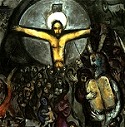
[ The following entry is related to the holiday of Firstfruits, which begins tonight at sundown... ]
04.20.11 (Nisan 16, 5771) The Scriptures make clear that Yeshua is the true Passover Lamb of God (שֵׂה הָאֱלהִים) whose sacrificial death and shed blood causes the wrath of God to "pass over" (pasach) those who are trusting in Him (John 1:29, 3:36; Acts 8:32-36; 1 Cor. 5:7-8; 1 Pet. 1:18-20, etc.). Worthy is the Lamb who was slain! (Rev. 5:12). But while the sacrifice of Yeshua gives us atonement (כַּפָּרָה) with God, the resurrection of the Messiah (i.e., techiyat ha-Mashiach: תְּחִיַּת הַמָּשִׁיחַ) justifies His work of salvation on behalf of the sinner and forever vindicates the righteousness of God.
The resurrection of Yeshua is not an "academic" or speculative question to be considered in purely rational terms, but rather is a matter of eternal life or death. How we choose to respond to its message determines our destiny. Everything turns on whether we awaken to the risen reality and Presence of Yeshua in our lives. Without Him we are hopeless; with Him we are more than conquerors (1 Cor. 15:14; Rom. 8:37).
For more on the tremendously important subject of why the resurrection of Yeshua matters, please see this article.
בָּרוּךְ הוּא הָאֱלהִים אֲשֶׁר נָתַן־לָנוּ תְּשׁוּעָה נִצַּחַת בְּיַד
יֵשׁוּעַ הַמָּשִׁיחַ אֲדנֵינוּ
barukh hu ha-Elohim asher natan-lanu teshuah nitzachat b'yad
Yeshua ha-Mashiach Adoneinu
Thanks be to God, who gives us the victory through
our Lord Yeshua the Messiah! (1 Cor. 15:57)
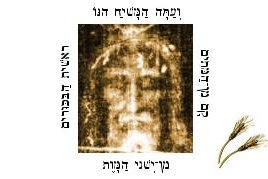
(Study Card Download)
הִנֵּה הוּא בָא עַד־מְהֵרָה / hinei hu va ad-maherah: "Behold, He comes quickly."
He is Risen Indeed!
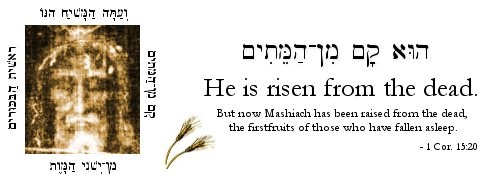
[ The following entry is related to the holiday of Firstfruits, which begins tonight at sundown... ]
04.20.11 (Nisan 16, 5771) Happy Passover! Although sincere people may differ on some of the details, it is likely that Yeshua was crucified on Nisan 14 in the afternoon (a Thursday) and rose from the dead three days later, on Nisan 17 (i.e., Saturday night). The disciples then encountered the risen Lord later that day in the morning (Matt 28:1-10). Note that while the corresponding Gregorian dates for these dates vary from year to year, this year Nisan 17 begins Wednesday April 20th at sundown. Other events that occurred on Nisan 17 include the following:
- Noah's Flood Ended: Gen. 8:4. Note that the seventh month was later designated as the first month at the time of the Exodus (Ex. 12:2). Our new creation in Messiah began on the anniversary of the rebirth of the world.
- Israel Crossed the Red Sea: Some sages believe that Israel crossed Yam Suf on this date. They reason that from the crossing of the sea to the arrival at Sinai was 47 days (Ex. 19). Three days later would mark the 50th day as the original occasion of Shavuot and the commemoration of the giving of the Torah.
- The Wave Sheaf offering was made at the Mishkan (and later, at the Temple). This was the first fruit of the Spring barley harvest. For more information, see Reshit Katzir.
- Haman was hanged. According to various Jewish authorities, the villain Haman was hanged on the gallows he had specifically prepared for Mordechai the Jew on this date.
- Yeshua was resurrected on Nisan 17. In 1 Cor. 15:20-23 Paul clearly links the firstfruit offering with the resurrection of Yeshua our Mashiach. Yeshua's resurrection was like a "wave offering" presented before the Father as the "firstfruits" of the harvest to come! Moreover, Yeshua presented His firstfruits offering to the Father on this day (Matt. 27:52-53). Yeshua is the first-begotten of the Father (Heb. 1:6); the Firstborn of Creation (Col. 1:15-16); the first-begotten of the dead (Rev. 1:5) and is the Firstfruits of those who are to be resurrected (1 Cor. 15:20-23). Baruch HaShem. And just as He is our Firstfruits, so "He chose to give us birth through the word of truth, that we might be a kind of first fruits of all he created" (James 1:18). For more information, see Reshit Katzir.
Our LORD Yeshua -- the Killer of death; the Slayer of the Serpent; the Victory of God's love for us! יְהִי שֵׁם יְהוָה מְברָךְ - "Blessed be the Name of the Lord."
וְעַתָּה הַמָּשִׁיחַ קָם מִן־הַמֵּתִים
רֵאשִׁית הַבִּכּוּרִים מִן־יְשֵׁנֵי הַמָּוֶת
ve'atah ha-mashiach kam min-hamatim,
reshit ha-bikkurim min-yeshenei ha-mavet
But now Messiah has been raised from the dead,
the firstfruits of those who have died (1 Cor. 15:20).
Download Study Card
Postscript: Though the Gregorian calendar varies every year, originally Yeshua's suffering on the Cross would have been Thursday afternoon -- certainly not on "Good Friday." Moreover, His resurrection would have occurred on the following Saturday night -- not on Sunday morning when the tomb was already found empty.... Nonetheless, the most important thing -- the matter of "first importance" -- is that Messiah 1) died for our sins; 2) was buried; and 3) was raised the third day (1 Cor. 15:3-4). Good people sometimes argue over the details but risk missing the greater point. Yeshua completely atoned for our sins and His resurrection validated that God the Father accepted His sacrifice. It was God the Father who raised Yeshua in victory (Gal. 1:1, Rom. 10:9), and those who trust in Him are justified by faith. Yeshua "was delivered for our offenses, and raised again for our justification" (Rom. 4:25). As Yeshua the Messiah said, "Because I am alive, you also will live" / כִּי־אֲנִי חַי וְכֵן גַּם־אַתֶּם תִּחְיוּן / ὅτι ἐγὼ ζῶ καὶ ὑμεῖς ζήσετε (John 14:19).
כִּי־אֲנִי חַי וְכֵן גַּם־אַתֶּם תִּחְיוּן
ki-ani chai, v'khen gam-atem tichyun
"Because I am alive, you also will live" (John 14:9)
Should We "Count the Omer"?

[ The following entry is related to the practice of "counting the Omer," which was commanded to done for exactly 49 days following Passover. ]
04.20.11 (Nisan 16, 5771) The word "omer" (עמֶר) generally refers to a measure of grain. The Torah commands that an omer of new grain (called chadash) must be "waved" before the altar on each of the 49 days between Passover and Shavuot (Lev. 23:15-21). This is called omer ha-tenufah (עמֶר הַתְּנוּפָה), or the "waving of the omer." Prior to the offering of such "new grain," only produce from earlier harvests could be eaten (called yashan). This is the "firstfruits" connection. Only crops that have been first dedicated to God are kosher for use by God's people...
For Pharisaical (and Rabbinical) Judaism, the "Counting the Omer" (סְפִירַת הָעוֹמֶר) begins on the second day of Passover (i.e., Nisan 16) and continues 49 days until Erev Shavuot (this implies that Shavuot always falls on Sivan 6 on the fixed Jewish calendar). For the Sadducees (and the later Karaites), the count begins following the weekly Sabbath after Passover and ends on Erev Shavuot (this implies that Shavuot always occurs on a Sunday, though the date is not set on the Jewish calendar). In general, however, the period between Passover and Shavuot is simply called "the Omer," and the key ritual activity is sefirah ("counting"), since the primary obligation is the literal counting of days leading up to the festival of Shavuot. The sages interpret, "You shall count for yourselves" (סְפַרְתֶּם לָכֶם) to mean that each person should count each day of the omer out loud (usually at the conclusion of the daily evening prayer service). The formulaic blessing is: "Blessed are You, LORD our God, Master of the Universe, who has sanctified us with His commandments and commanded us to count the omer: Tonight is the xx night of the Omer."

The period of the omer ends after counting seven weeks, or seven times seven days from Passover to Shavuot. The symmetry of the count (7 x 7) suggests perfection and completion. The "Jubilee" of Shavuot is a climax - first of the revelation given at Sinai, and later with the greater revelation given at Zion. This is why the sages say that the end of the redemption process, which began at Passover, will be completed at Shavuot. "For the Messiah is the goal (τέλος) of the law for righteousness for all who believe" (Rom. 10:4).
In the written Torah, Shavuot is not directly connected to the revelation of the Torah at Sinai, though later Jewish tradition made such a connection. After the destruction of the Temple, the sages essentially divested the agricultural aspects of the holiday and decided that Shavuot would commemorate mattan Torah (מַתָּן תּוֹרָה), the giving of the Torah. Later still, the Kabbalists viewed the 49 days of counting as a sort of "mystical journey" back to Sinai, or rather a journey through the human soul. Each day of the count is thought to be associated with one of the "sefirot of God's emanations" and therefore affords an occasion to engage in moral and spiritual purification required before experiencing the dizzying heights of Sinai. According to these mystics, just as Israel "ascended" from 49 levels of impurity before being made worthy of the revelation given at Sinai, so we too should make special efforts to grow during these 49 days of teshuvah. Each day of the sefirah is thought to correspond to a specific area for spiritual growth (i.e., one of the divine attributes that are "mirrored" in the soul can become "unplugged" from obstruction), and by meditation, repentance, and other means the soul may merit being able to "rechannel" the divine energy of the universe to behold miracles, etc.
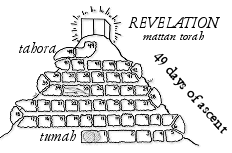
In this connection we note that Lag B'Omer, the 33rd day of the omer count, is regarded as a mystical holiday in Judaism, because on this date (i.e. Iyyar 18) the Kabbalah is claimed to have been revealed to Israel -- in a manner not unlike the revelation given at Sinai. The mitzvah of the omer is likened to a "build up" to Kabbalat HaTorah - the receiving of the Torah, and each day is thought to represent an additional "level" for obtaining greater clarity of its inner meaning. Hence many siddurim (prayerbooks) include the following concluding paragraph after describing the ritual for counting the omer for the day:
"Master of the Universe, You commanded us through Moses Your servant to count the Omer in order to cleanse us from our encrustations of evil and from our contaminations, as You have written in Your Torah, so that the souls of Your people Israel be cleansed of their contamination. Therefore, may it be Your will, God, our God and the God of our Forefathers, that in the merit of the Omer-Count that I have counted today, that there be corrected whatever blemish I have caused in the sefirah. May I be cleansed and sanctified with the holiness of Above, and through this may abundant bounty flow in all the worlds. And may it correct our lives, spirits, and souls from all sediment and blemish; may it cleanse us and sanctify us with Your exalted holiness. Amen."
Note the Kabbalistic cosmology expressed in this closing paragraph of the traditional omer count formula. The kellipot, or "encrustations," block the hidden divine light within us which causes an "imbalance" in the emanations (sefirot) of God's attributes. We can influence God's disposition toward the world through our actions of repentance. Our responsibility is to "clean out the pipes" so that the divine light/energy can freely flow down to us. If we mirror the positive attributes of God, the divine light will be increased; on the other hand, if we indulge in laziness or indifference, the divine light will be decreased. The Omer period, then, is a time of revelation, or a time to move from the concealment of God's hand to a time of disclosure.
Contrary to such claims of medieval Kabbalah, Yeshua never taught His disciples to remove "encrustations" from the soul. On the contrary, He taught that human beings were slaves to sin in need of radical deliverance and spiritual rebirth (John 8:24; 44; John 3:3-10). And though He preached teshuvah (repentance), Yeshua never suggested that people were "shattered vessels" that needed to be reabsorbed into a greater World Soul (i.e., pantheism). Likewise, Yeshua never taught that God's hidden essence was revealed through ten sefirot (attributes), or that human nature was "parallel" to the sefirotic structure of the universe. And surely Yeshua would have objected to the claim that human beings have power to influence God or to "affect His disposition" by performing various religious rites or rituals (Mark 7:5-9). No, Yeshua was apocalyptic in his eschatology and never taught the idea of tikkun olam (repair of the world) through self-effort. He plainly taught that He alone was the Savior of the world (מוֹשִׁיעַ הָעוֹלָם), and that salvation, spiritual life, and the ultimate healing of the world would come solely through Him...
Recently I read an article from a large Messianic ministry (that will go unnamed) that extolled the omer count and recommended its practice for Christians. Unfortunately, the article assumed a Kabbalistic understanding of the omer and did not mention the hidden assumptions at work behind the idea of spiritual "elevation" or "works righteousness." Let me repeat here something I've written about elsewhere, and that's that Kabbalah is fundamentally opposed to the idea of salvation through Yeshua alone. Kabbalah claims that human nature is essentially a "part of god" and that "salvation" is to become like god through removing of the "kellipot." This is obviously not the salvation message that Yeshua came to bring, nor does it elevate the sacrifice of Yeshua as the means for obtaining eternal kapparah (atonement) and healing with the Father. Since Kabbalah teaches a false system of salvation, it needs to be exposed to Christians who are tempted to dabble in its doctrines.
How should followers of the Messiah "count the omer"? After all, the Torah does indeed say that we are to count 49 days until the 50th day of "Pentecost." Well, the point of the omer count was to foretell of the giving of the Holy Spirit (רוּחַ הַקּדֶשׁ) and to confirm the New Covenant of God. The redemption process that began at Passover was indeed completed at Shavuot, and that "completion" is the revelation of God's love and deliverance for the whole world. Though the Jewish sages did not fathom the use of the otherwise forbidden leaven in the offering (Lev. 2:11), prophetically the waving of shtei ha-lechem pictures the "one new man" (composed of both Jew and Gentile) before the altar of the LORD (Eph. 2:14). The countdown to Shavuot therefore goes beyond the revelation of Torah given at Sinai and points to the greater revelation of Zion. Yeshua removes our tumah (טוּמְאָה) and makes us tahor (טָהוֹר) by His sacrifice as the true Passover Lamb upon the Cross; Shavuot is the fulfillment of the promise of the Holy Spirit's advent to those who are trusting in Him. "Counting the Omer" is about being clothed with the Ruach HaKodesh (Holy Spirit) to experience and know the resurrected LORD of Glory. You can "count" on that, chaverim!
 |
Sefirot Ha-Omer:
Counting the Omer

[ The following entry is related to the practice of "counting the Omer," which was commanded to done for exactly 49 days following Passover. ]
04.20.11 (Nisan 16, 5771) The Torah commands that on the second day after Passover, on the day the first sheaf (omer) of barley is brought into the temple on Yom Bikkurim, forty nine days are to be counted until the climactic festival of Shavuot on the 50th day (Lev. 23:15-16). In Jewish tradition, these forty nine days – "seven weeks of days" – begin on the second day of Passover and run until the holiday of Shavuot (Pentecost or "Weeks"). This period of time is called Sefirat HaOmer (סְפִירַת הָעוֹמֶר), or the "counting the sheaves." Every day during this season a blessing is recited naming exactly how many more days are left before the "seven weeks of days" are complete. Psalm 67 is often recited because it is composed of 49 Hebrew words which correspond to the 49 days of the Omer count.
In traditional Judaism, the Omer is counted from Nisan 16 through Sivan 5. On our Gregorian calendars, the count began last night and will run 49 days until the evening of June 6th (this implies that Shavuot will begin on June 7th, after sundown this year).
According to some of the Jewish mystics, the Omer count represents the way of teshuvah, one day for each of the 49 "levels of sin" that the Jewish people had degraded into while being slaves in Egypt. Just as there are 49 levels of spiritual impurity (i.e., tumah: טוּמְאָה), so there are said to be 49 levels spiritual of purity (i.e., tahora: טְהוֹרָה). In Judaism, then, the count is intended to prepare us for the subsequent revelation at Sinai. Normally a meditation is given for each of the 49 days to help you "purge" a sinful condition from your life in order to attain higher levels of purity (this process is sometimes called madregot ha-tahara, "the stairs of purity").
 |
From a Messianic point of view, the climax of the 49 days was not the giving of the law at Sinai, but rather the revelation of the altar (Tabernacle) and its subsequent fulfillment in the sacrificial death of Yeshua as our Lamb of God. Moreover, it was during this time that Yeshua made His post-resurrection appearances to His disciples - and indeed ascended to heaven during this 49 day period... Of particular importance is the holiday of Shavuot, day 7x7 of the count, when the Holy Spirit (Ruach ha-Kodesh) was given to the disciples in fulfillment of the promise of Yeshua that we would not be left comfortless... Shavuot, then, marks the time of "Jubilee" of the Spirit, when are clothed with power from on high to serve the LORD without fear...
Happy Passover!

04.18.11 (Nisan 14, 5771) "In each and every generation an individual should look upon him or herself as if he or she (personally) had left Egypt." Faith (אֱמוּנָה) looks not to the things that are seen but to the things that are unseen; for the things that are seen are transient, but the things that are unseen are eternal (2 Cor. 4:18). It was the hope of the slaves in Egypt that gave them the will to look forward to a better world, unmarred by the degradation of their slavery, full of dignity, love, joy, and peace in God's truth... Likewise we are "saved by hope" (Rom. 8:24), believing that all things are working together for good to those who likewise are trusting in the LORD's deliverance from all the "Pharaoh's" and evils of this present age... May God soon complete our salvation, chaverim...
We are getting ready to begin our Passover Seder this evening, but I wanted to take a moment to wish each of you a wonderful season of peace and joy, especially during this time that commemorates the yahrzeit of Messiah... Pesach Sameach! Because of Yeshua, we have the very greatest of all reasons to cry out, "Dayenu" (Rom. 8:31-39)!
 |
Leil Shimurim - "A Night to be Guarded"
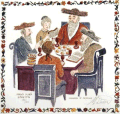
[ The following entry is related to the holiday of Passover, which begins tonight at sundown... ]
04.18.11 (Nisan 14, 5771) The Torah records that the Jewish people were in Egypt 430 years, b'etzem hayom (בְּעֶצֶם הַיּוֹם) - "to the selfsame day" (Exod. 12:40-41). According to tradition, Moses encountered the burning bush at Sinai on the 15th day of the month of Aviv (i.e., Nisan), and the Exodus from Egypt occurred exactly one year later, on Nisan 15. Passover therefore commemorates the "appointed time" when God would redeem His people, as was earlier foretold to Abraham during the "covenant of the parts":
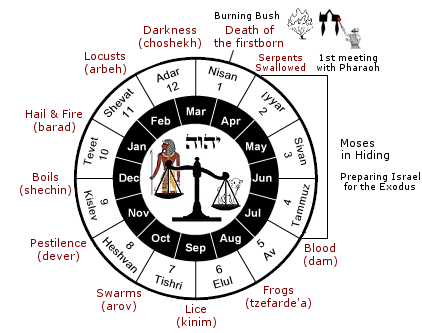 |
"At the end of 430 years, on that very day (i.e., Nisan 15), all the hosts of the LORD went out from the land of Egypt" (Exod. 12:41). Immediately after stating this, the Torah refers to Passover as leil shimurim (לֵיל שִׁמֻּרִים), a "night to be guarded" (from the verb shamar, which means "to watch" or "to guard"). "It is a night that is guarded (leil shimurim) by the LORD to take them [Israel] out of Egypt; this night remains a night to be guarded (שִׁמֻּרִים) by the people of Israel throughout their generations" (Exod. 12:42). Since "this night" - ha-lailah hazeh (הַלַּיְלָה הַזֶּה) - was guarded by God from the beginning to be the time of redemption, Israel must therefore "guard this night" by means of the Passover Seder (Exod. 13:10; Deut. 16:1). The festival of Passover recalls and celebrates God's faithfulness and redemptive love...
According to midrash, the phrase leil shimurim literally means "night of the watches" (shimurim is plural) which appears twice in this verse, and therefore it refers not only to the original redemption in Egypt (i.e., the Passover), but also to the time of future redemption by the Messiah (Shemot Rabbah 18). This explains why this night is guarded for all generations. The Babylonian Talmud (Tractate Rosh Hashanah 11a) further states: "In Nisan our forefathers were redeemed from Egypt, and in Nisan we will be redeemed." In that sense, Nisan is called Chodesh ha-Yeshuah (חדֶשׁ הַיְשׁוּעָה), the "month of the salvation," both in terms of the physical deliverance from Egypt, but more profoundly in terms of the spiritual salvation given through the Messiah Yeshua (הַמָּשִׁיחַ יֵשׁוּעַ), who was crucified as the "Lamb of God" precisely during this time...
In this connection, we see that Yeshua is the "light of life" that was given on our behalf (John 1:4; 8:12). The blood of the korban Pesach (קָרְבָּן פֶּסַה) - the Passover lamb - was to be smeared on the two sides and top of the doorway, resembling the shape of the letter Chet. This letter, signifying the number 8, is connected with the word חי (chai), short for chayim (life). The blood of the lamb (דַּם הַשֶּׂה) not only saves from the judgment of death, but also is a symbol of divine life:

And Yeshua said to them, "I have earnestly desired to eat this Passover Seder with you before I suffer" (Luke 22:15). Why Redemption? So that we may become the children of God, clothed with everlasting dignity... We must never regard ourselves as slaves - not to the State, not to fear, and not to religious rituals. Yeshua gave up His life for us so that we could live - today - as his dearly loved children. Put another way, Yeshua died not just for our sins, but so that we would be elevated to walk as sons and daughters of God...
All of this predates the giving of the law code at Sinai, of course, and indeed goes back to the "Gospel in the Garden" and the prophecy of the Promised Seed.... The original Passover sacrifice (i.e., korban Pesach) was not given to the Levitical priesthood as a sin offering since it preceded Sinai and the giving of the various laws concerning the sacrificial rites. In the same way, Yeshua's sacrifice was directed from Heaven itself by means of the prophetic office of Malki-Tzedek (מַלְכִּי־צֶדֶק) - a higher order of priesthood that was ordained from the foundation of the world itself (Gen. 14:18; Ps. 110:4; Heb. 7; 1 Pet. 1:20; Rev. 13:8). Worthy is the Lamb who was slain!
 |
How Many Cups for Passover?
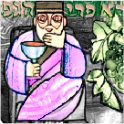
[ The following entry is related to the holiday of Passover, which begins Monday, April 18th at sundown this year. ]
04.17.11 (Nisan 13, 5771) After Moses first delivered God's message to let the Israelites go, Pharaoh hardened his heart and imposed even harsher decrees against the Israelites which caused them to suffer miserably. Moses then appealed to the LORD, who reassured him that Pharaoh would eventually relent because of "the greater might" of God's power to deliver His people. God spoke to Moses and said to him, "I am the LORD (אֲנִי יהוה). I appeared (וָאֵרָא) to Abraham, to Isaac, and to Jacob, as El Shaddai (אֵל שַׁדָּי), but by my name YHVH (שְׁמִי יהוה) I did not make myself known to them (Exod. 6:2-3).
Notice that the divine Name YHVH (יהוה) was of course already known in a cognitive sense by the pre-Mosaic fathers, but this passage (and the accompanying revelation of YHVH's verbs of redemption ["I will free... deliver... redeem... take you.. bring you into the land"]) were intended to indicate that the direct experience of YHVH's power and glory was not fully apprehended by the patriarchs of Israel (for more on this, see "The Revelation of YHVH").
God then told Moses that he was going to fulfill his promise to Abraham, Isaac, and Jacob by giving the Israelites the land of Canaan, and that he had heard the "groaning of the people of Israel whom the Israelites held as slaves" (Exod. 6:5). He then instructed Moses to deliver five (or six?) promises to the people of Israel: "I am the LORD, and I will bring you out from under the burdens of the Egyptians, and I will deliver you from slavery to them, and I will redeem you with an outstretched arm and with great acts of judgment. I will take you to be my people and I will be your God, and you shall know that I am the LORD your God, who has brought you out from under the burdens of the Egyptians. I will bring you into the land that I swore to give to Abraham, to Isaac, and to Jacob. I will give it to you for a possession. I am the LORD" (Exod. 6:6-8).
Note that during the traditional Passover Seder, we drink four cups of wine that recall four of these promises of God. These cups are as follows:
- The Cup of Sanctification - "I will bring you out (i.e., hotzeti: הוֹצֵאתִי) of Egypt." The first cup "sets apart" the time of Passover (i.e., Kiddush).
- The Cup of Deliverance - "I will deliver you (i.e. hitzalti: הִצַּלְתִּי) from slavery." The second cup celebrates the story of the Exodus (Maggid) and recounts the ten plagues (i.e., eser ha-makot: עֶשֶׂר הַמַּכּוֹת) described in the Book of Exodus.
- The Cup of Redemption - "I will redeem you (i.e., ga'alti: גָאַלְתִּי) with My power." The third cup celebrates God's redemption through the blood of the lamb at the end of the meal (partaken after the Afikomen is eaten). This was the cup that Yeshua sanctified to commemorate the "blood of the new covenant" which He poured out for the remission of our sins (Luke 22:20; Matt. 26:28).
- The Cup of Restoration - "I will take you (i.e., lakachti: לָקַחְתִּי) as My people and I will be your God." This cup closes the Passover Seder (Hallel). Since Yeshua told his disciples that He would not drink the fourth cup but promised to do so with them in the coming Kingdom (Matt. 26:29), it may be called the Cup of Restoration, since it will be fully savored only after "all Israel shall be saved" (Rom. 11:26).

- The Cup of Elijah - The sages who compiled the text of the traditional Haggadah wanted to add a fifth cup based on the promise: "I will bring you (i.e., heveti: הֵבֵאתִי) into the land I swore to give to Abraham, Isaac, and Jacob" (Exod. 6:8), though at the time the Haggadah was composed, this promise had not been fulfilled. A "fifth cup" was therefore placed on the seder table as the "Cup of Elijah" and its promise expressed in the hope: "Next year in Jerusalem!" Today, we can say, "Next year in the Jerusalem rebuilt by the Messiah." (Strictly speaking, the sages should have added a sixth cup to the seder, based on the promise that God would give (נָתַתִּי) the land to the Jewish people as an everlasting possession.)
When Moses told the Israelites the good news of God's forthcoming redemption, the people would not listen because of their "shortness of breath" (מִקּצֶר רוּחַ) and their harsh slavery. The LORD then told Moses: "Go in, tell Pharaoh king of Egypt to let the people of Israel go out of his land." Moses then protested that if the Israelites would not listen to him, how could he hope to convince Pharaoh? The narrative does not provide an explicit answer to Moses' question, though it repeats that God "charged" Moses and Aaron to bring the people out of Egypt (Exod. 6:13). The rest of the story of the Exodus would be God's answer...
Passover: Who knows 15?

[ The following entry is related to the holiday of Passover, which begins Monday, April 18th at sundown this year. ]
04.17.11 (Nisan 13, 5771) Many of us are familiar with the connection between Passover and the number four. There are four "special Sabbaths" that precede the festival, and the holiday itself has four names: Chag Ha-Pesach (the holiday of the Passover [Num. 9:2]); Chag HaMatzot (the holiday of Unleavened Bread [Exod. 12:17-20]); Chag Ha-Aviv (the holiday of spring [Deut. 16:1]), and Z'man Cheiruteinu (the Season of our Freedom). During the seder, we partake of arba kosot ("four cups"), ask arba kushiyot ("four questions"), discuss arba Banim ("four sons"), and so on. However, it has been noted by various sages that the number fifteen is also connected to this holiday. There are 15 Steps to the traditional Passover Seder, which is held exactly 15 days into the first month of the Jewish year (i.e., Nisan). The famous "Song of the Sea" (i.e., Shirat Hayam: שִׁירַת הַיָּם) - which thanks God for the Exodus from Egypt - is found in the 15th chapter of the Book of Exodus, which was crafted by the scribes so that its center column has exactly 15 "steps" of text:
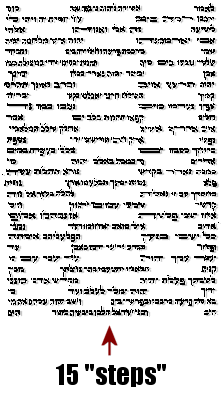
The Divine Name YAH (יה) - which first occurs in the Scriptures in the "Song of the Sea" (Exod. 15:2) - equals 15 in Hebrew gematria, and during the seder meal there are 15 things for which we sing Dayenu (i.e., דַּיֵּנוּ: "it would have been enough"). Furthermore, there were 15 steps on the south side of the Temple Mount, leading up to the Temple, and 15 psalms (120-134) that sung by the Levites as "Songs of the Steps." There are also 15 words uttered in the Priestly Blessing (Birkat Kohanim).... 15 is also the number of completion (7) combined with the number of grace (8), indicating the plan of God's redemption for the ages.
The Sequence of the Plagues
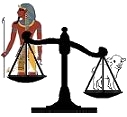
04.17.11 (Nisan 13, 5771) During the Maggid section of the Passover Seder we retell the story of the Exodus, which includes a description of the plagues of Egypt (i.e., makot Mitzraim: מַכּוֹת מִצְרַיִם). Each time we hear the name of a plague, we spill a little wine from the Second Cup... Since there were a total of ten distinct plagues delivered upon Egypt, they are also called the "Ten Plagues" (i.e., eser ha-makot: עֶשֶׂר הַמַּכּוֹת):
- Makat Dam (מַכַּת־דָם): Water turned to blood (Exod. 7:14–25)
- Makat Tzefarde'a (מַכַּת־צְפַרְדֵּעַ): Frogs from the Nile (Exod. 7:25–8:11)
- Makat Kinim (מַכַּת־כּנִּים): Gnats (or lice) from the dust (Exod. 8:12–15)
- Makat Arov (מַכַּת־עָרוֹב): Swarms of flies (or wild animals) (Exod. 8:20–32)
- Makat Dever (מַכַּת־דֶבֶר): Pestilence (Exod. 9:1-7)
- Makat Shechin (מַכַּת־שְׁחין): Boils (Exod. 9:8-12)
- Makat Barad (מַכַּת־בָּרָד): Hail and Fire (Exod. 9:13-35)
- Makat Arbeh (מַכַּת־אַרְבֶּה): Locusts (Exod. 10:1-20)
- Makat Choshekh (מַכַּת־חוֹשֶׁךְ): Darkness (Exod. 10:21-29)
- Makat Bechorim (מַכַּת בְּכוֹרוֹת): Death of the firstborn (Exod. 11:1-12:36)
Judgment upon the gods

Exodus 12:12 God says, "... on all the gods of Egypt I will execute judgments." Thus the plagues are thought to be symbolic of the defeat of various gods venerated in ancient Egyptian mythology (and occultism in general):
- Water turned to blood - Hapi and/or Khnum (god of the Nile)
- Frogs from the Nile River - Heket (goddess of fertility and water)
- Gnats from the dust - Geb (god of the Earth)
- Swarms of Flies - Khepri (god of creation, lord of flies or beetles)
- Death of Livestock - Apis (goddess of animals depicted as a bull); Osiris
- Ashes to boils - Isis (goddess of nature, healing and peace)
- Hail and Fire - Nut (sky goddess and sister of Geb)
- Locusts sent from the winds - Set (god of storms, darkness, and disorder)
- Three days of darkness - Ra (the Sun god) and Set (god of darkness)
- Death of the firstborn - Pharoah ("son of Ra"); Khnum/ Amon (ram god)

Note: Some ask whether the "signs and wonders" of the plagues were intended more for the Israelites than for the Egyptians, since the Israelites had been oppressed by the powers of Egypt to the point of being "without the breath of hope."
Regarding the sequence of the plagues, Rabbi Bechaye (11th century, Spain) wrote that they followed one another over a twelve-month period. On Nisan 15 God spoke to Moses from the burning bush and commissioned him to go to Pharaoh. On Nisan 21, Moses told his father-in-law Yitro (Jethro) of his mission and left for Egypt. Near the end of the month of Nisan, Moses immediately went before Pharaoh and warned him to release the Jews. For the next three months (Iyyar, Sivan, and Tammuz), Moses went into hiding. The plague of blood began on the first of Av and lasted seven days. A respite of three weeks occurred before the next plague (frogs). This was the pattern for all the ten plagues (i.e., roughly a week-long plague for each month). The last plague - that of the death of the firstborn - occurred in the month of Nisan, a year after Moses first warned Pharaoh (Exod. 4:22-23). The period of the plagues therefore totaled twelve months (Tzenah Urenah).
- Av 1 - Blood (i.e., dam: דָם)
- Elul 1 - Frogs (i.e., tzefarde'a: צְּפַרְדֵּעַ)
- Tishri 1 - Lice (i.e., kinim: כִּנִּים)
- Cheshvan 1 - Swarms (i.e., arov: עָרוֹב)
- Kislev 1 - Pestilence (i.e., dever: דֶּבֶר)
- Tevet 1 - Boils (i.e., shechin: שְׁחִין)
- Shevat 1 - Hail and Fire (i.e., barad: בָּרָד)
- Adar 1 - Locusts (i.e., arbeh: אַרְבֶּה)
- Nisan 1 - Darkness (i.e., choshekh: חוֹשֶך)
- Nisan 15 - Death of the firstborn (i.e., makat bechorim: מַכַּת בְּכוֹרוֹת)
Here is a simplified diagram of the sequence given in the midrash:
The story of yetziat mitzraim (the Exodus from Egypt) is to be retold to every generation, and its lessons are to be applied to every age and place. Hence the Passover Seder and its focus on the needs of children. The Hebrew word for "education" is chinukh, a word that shares the same root as the word "chanukah" (חֲנֻכָּה, dedication). We "tell the story so that we may know" that the LORD is God (Exod. 10:2). Education is ultimately devotional. God called the people of Israel to cleave to Him and walk in His ways....
The first commandment given to the nation of Israel (as opposed to patriarchs or individual leaders such as Moses and Aaron) was that of Rosh Chodashim (i.e., the Biblical New Year that begins on the first new moon of Spring). "This month shall be the beginning of months for you" / הַחדֶשׁ הַזֶּה לָכֶם ראשׁ חֳדָשִׁים (Exod. 12:2). Our corporate identity therefore begins with a shared consciousness of time from a Divine perspective. The mo'edim (festivals of the LORD) all are reckoned based on the sacred calendar given to the redeemed Israelite nation. As the psalmist declared: "He made the moon for the appointed times" / עָשָׂה יָרֵחַ לְמוֹעֲדִים (Psalm 104:19). Yeshua followed this calendar, as did His first followers.
For more on this subject, see the article "The Sequence of the Plagues."
 |
The Torah of Passover

[ The following entry is related to the holiday of Passover, which begins Monday, April 18th at sundown this year. ]
04.17.11 (Nisan 13, 5771) The Exodus is perhaps the most fundamental event of Jewish history. In addition to being commemorated every year during Passover (Exod. 12:24-27; Num. 9:2-3; Deut. 16:1), it is explicitly mentioned in the first of the Ten Commandments (Exod. 20:2), and it is recalled every Sabbath (Deut. 5:12-15). The festivals of Shavuot and Sukkot likewise derive from it (the former recalling the giving of the Torah at Sinai and the latter recalling God's care as the Exodus generation journeyed from Egypt to the Promised Land). Indeed, nearly every commandment of the Torah (including the laws of the Tabernacle and the sacrificial system) may be traced back to the story of the Exodus. Most importantly, the Exodus prefigures and exemplifies the work of redemption given through the sacrificial life of Yeshua the Messiah, the true King of the Jews and the Lamb of God.
The very first occurrence of the word "Torah" (תּוֹרָה) in the Scriptures refers to the obedient faith of Abraham (Gen. 26:5), and the second occurrence refers to the law of Passover: "There shall be one law (תּוֹרָה) for the native and for the stranger who sojourns among you" (Exod. 12:49). There is a link between these two occurrences. Abraham lived before the time of the Exodus, of course, and therefore he obeyed the law of Passover by means of the Akedah (the sacrifice of his "only begotten" son Isaac). Despite offering his son up upon the altar at Moriah, Abraham believed in the LORD and it was credited to him as tzedakah (righteousness). Abraham's obedience revealed that the inner meaning of Torah is that the "righteous shall live by faith" (Hab. 2:4, Rom. 1:17). The Torah of Passover (תּוֹרַת פֶּסַח) likewise teaches that redemption from death is possible through the exchange of an innocent sacrificial victim. The blood of the Passover was "a sign" of imputed righteousness that was obtained entirely by faith. This is the "korban" principle of "life-for-life" that underlies the Torah of the sacrificial system of the Tabernacle as well. Ultimately all true Torah points to Yeshua, who is the divinely appointed Redeemer and the beginning and goal of all of creation... "When the fullness of time (τὸ πλήρωμα τοῦ χρόνου) had come, God sent forth his Son, born of woman, born under the Torah, to redeem those who were under the Torah, so that we might receive adoption as sons" (Gal. 4:4-5).
 |
Ta'anit Bechorot - תענית בכורות

[ The following entry is related to the holiday of Passover, which begins Monday, April 18th at sundown this year. ]
04.17.11 (Nisan 13, 5771) It is customary for firstborn adult males (i.e., bechorim) to fast on the day preceding Passover (i.e., Nisan 14), to commemorate that they were saved from the plague of the firstborn (מַכַּת בְּכוֹרוֹת), that is, the final plague when all of the firstborn males in Egypt were killed just before the Exodus. In Hebrew this sunrise-to-sunset fast is called Ta'anit Bechorot.
There are several different traditions how stringently this fast is to observed and by whom. For example, if there is no first born male in a Jewish household, then the oldest male in the family usually fasts. If a firstborn son is too young to fast, the father of the household will fast in his place, even if he himself is not a firstborn son (Rama 470:2).
Chametz for Passover?
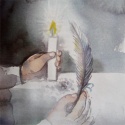
[ The following entry is related to the holiday of Passover, which begins Monday, April 18th at sundown this year. ]
04.15.11 (Nisan 11, 5771) The Torah is filled with various imperatives of one kind or another. The term mitzvah (מצוה) is a general term used to refer to any commandment given by God. The various mitzvot can be further divided into the subcategories of "chukkim" and "mishpatim" (Deut. 4:5). Generally speaking, mishpatim (מִשְׁפָּטִים) are rules or "judgments" given for a clearly specified reason. These sorts of rules, such as the prohibition to steal, promote well-being in a society and therefore make sense to us. Chukkim (חֻקִּים), on the other hand, are statutes given without a specifically stated reason (i.e., fiats or divine decrees). These sorts of decrees, such as the prohibition of mixing seeds or fabrics (kilayim), may appear irrational to human reason....
A verse from our Torah portion this week states that God expects His people to "follow my rules (mishpatim) and keep my decrees (chukkim) and la-lechet bahem (לָלֶכֶת בָּהֶם), 'to walk in them.' I am the LORD your God" (Lev. 18:4). This idea of "walking in" the commandments is called halakhah (הֲלָכָה), which derives from the verb halakh (הָלַךְ), meaning "to walk." Notice, however, the immediately following verse: "You shall keep my statutes and my rules, which the man who shall do them shall live by them (וָחַי בָּהֶם): I am the LORD" (18:5). The sages interpret this verse to mean that the Torah's commandments are intended to lead to life, and therefore they deduced that there were certain cases where the commandments may be broken to avoid the loss of life. For instance, if someone were to force you to eat non-kosher meant or to be killed, the sages state that you should go ahead and eat the unclean meat... The duty to honor life - pikuach nefesh - is more important than following the "letter of the law" in such extreme cases. The same can be said about violating the laws regarding the Sabbath: it is morally praiseworthy to violate the Sabbath day in order to save someone's life... There are, however, certain exceptions that are regarded as "absolute" obligations. The prohibitions against murder, incest, and idolatry are always to be observed, even to the point of death itself. In these cases, in other words, it is better to die kiddush haShem (as a martyr) rather than to violate one of these commandments.
During the Holocaust, Jews at the concentration camps who wanted to observe the Passover Seder faced a dilemma regarding the "letter of the law." The Torah clearly states that no chametz was to be eaten during the days of Passover, but the only food given to the prisoners contained leaven. The prisoners were forced to either use chametz as their "matzah" (and water as their "wine") or else to fast for the holiday, thereby endangering their lives.... The rabbis quoted the verse from our Torah portion - "you shall live by my commandments" to imply "and not die by them" to not only permit the use of chametz but also provided a blessing for precisely doing so....
I share this with you to help keep things in perspective. As important as Passover rituals are (e.g., getting rid of chametz, etc.), they are never to trump the more important duties to honor life, to express gratitude, to walk in love, etc. Ahavat HaShem - the love of God - is ultimately what Passover (and the Cross) is all about, not religious rituals....
Someone might object that I am "adding" Jewish tradition to the words of the Scriptures by agreeing that "living by God's commandments" implies the (negative) duty not to die because of them, but I would argue that Yeshua Himself would agree with Jewish tradition in this case. In other words, I believe Yeshua would agree that it is a valid inference that "living by the commandments" is intended to promote life, and that sometimes the "letter of the law" may indeed be broken for the sake of saving or preserving life. Indeed Yeshua ran afoul of those Pharisees who regularly insisted that Jews should obey the "letter of the law" at the expense of the needs of others. Hence we see Yeshua going out of his way to heal people on the Sabbath day (Luke 13:14; John 5:7-12); we see him touching the "untouchable" lepers (Matt. 8:2-3; Mark 1:40-31); we see him "consorting" with tax collectors and "sinners" (Mark 2:16; Luke 7:36-50), and so on. In fact, some of Yeshua's most scathing words of condemnation were delivered to those religionists who set aside "tithes" at the expense of the needs of others (Mark 7:9-13; Matt. 23:23; Luke 11:42).
It's important to remember that Yeshua didn't live in a cultural vacuum when he ministered among the Jews of the late Second Temple period, and it may be safely said that He generally interpreted the moral meaning of the Torah similarly to Bet Hillel (and sometimes to Bet Shammai). He reaffirmed the central duty of the Torah (the Shema) and the duty to love others (for more on this subject, see the article, "Torah sheba'al Peh"). However it vital to remember that Yeshua did not come to teach us moral truth as much as He came to die as the Lamb of God... All of the moral law of the Torah is clearly restated in the New Testament. It is the sacrificial death of Yeshua that makes all the difference between the torah of the older covenant with the torah of the new.
So let's "keep the feast," chaverim, in the best way we can, but let's not forget what is really important during this season of Passover. Yeshua is the sacrificial Lamb of God who takes away all our sin and makes us clean before the Father... When God sees the blood of His Son, he "passes over" the visitation of his wrath (Exod. 12:13; John 1:29; 3:36). Any message or "ritual" of Passover that overlooks this central fact is therefore radically misguided.
Follow the path of peace, chaverim... I wish you a joyous a happy Shabbat this evening - and an especially grace-filled Passover season in the love of Yeshua, our true Lamb of God!
רָאוּי הַשֶּׂה הַטָּבוּחַ לְקַבֵּל גְבוּרָה
עשֶׁר וְחָכְמָה וְכּחַ וִיקַר וְכָבוֹד וּבְרָכָה
ra'uy ha·seh ha·ta·vu·ach le·ka·bel ge·vu·rah,
o·sher ve·chokh·mah, ve·ko·ach vi·kar, ve·kha·vod uv·ra·kha

"Worthy is the Lamb who was slain, to receive power and wealth and wisdom
and might and honor and glory and blessing" (Rev. 5:12)
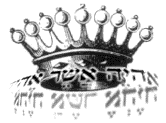
Download Reading Card
Note: It is customary to review the Passover Haggadah during Shabbat HaGadol to become better prepared for the upcoming Seder. To help you do this, you can download a free Seder Guide here.
The Passover Seder Plate

[ The following entry is related to the holiday of Passover, which begins Monday, April 18th at sundown this year. ]
04.15.11 (Nisan 11, 5771) Although there are various opinions about how to arrange the ceremonial items put on the Passover Seder plate (i.e., ke'arah: קערה), it is helpful to keep in mind that it is intended to serve as a "visual aid" to help recount the story of the deliverance from Egypt. One arrangement might look like this:
In this arrangement, the plate functions as a sort of "clock" to create a visual narrative of the basic events of the Exodus:
- Karpas (כַּרְפַּס) - A vegetable (such as parsley) that is dipped into salt water near the beginning of the Passover Seder. The presence of karpas represents the growth and fertility of the Jewish people in Egypt (Exod. 1:7).

- Charoset (חֲרֽוֹסֶת) - An apple, wine, and nut mixture that represents the mortar used by the Jewish slaves to build the storehouses of Egypt. Charoset symbolizes the toil and labor of the Jewish people in Egypt (Exod. 1:13-14).

- Maror (מָרוֹר) - A bitter herb, such as horseradish, that symbolizes the bitterness and harshness of the slavery which the Jews endured (Exod. 1:13-14).

- Chazeret (חֲזְרֶת) - An inedible bitter herb (such as horseradish root) that symbolizes the atrocity of infanticide (i.e., Pharaoh's decree to murder the Jewish baby boys). This herb is inedible because it "cannot be swallowed" or accepted, and therefore represents the repudiation of assimilation. Note that both maror and chazeret are regarded as the "bitter herbs" (plural) mentioned in Numbers 9:11.

- Zero'a (זְרוֹעַ) - A roasted lamb (or goat) shank bone that symbolizes the korban Pesach (i.e., the sacrificed lamb whose blood was put upon the doorposts). Note that the usual word for "bone" is etzem (עֶצֶם) in Hebrew, but the sages refer to the lamb as zero'a - "arm" - as in the "outstretched arm" (zero'a netuyah) of the LORD. The "arm of the LORD" is evidenced in His mighty deliverance of the Jewish people.

- Beitzah (בֵּיצָה) - A roasted egg that recalls the korban chagigah, or the roasted lamb that was slaughtered at the Temple during the season of Passover.

- Salt Water Bowl (מלח קערת המים) - The bowl of salt water on the plate first recalls the sweat and tears of the Jewish slaves, as later recalls the splitting of the Sea and the destruction of Pharoah's army. We use the salt water to dip the karpas, near the beginning of the seder and to dip the egg before the start of the seder meal.
Regarding the retelling of the story of Passover the Torah commands, "You shall tell (i.e., v'higadta: וְהִגַּדְתָּ, from which the word haggadah comes) your son on that day, 'It is because of what the LORD did for me when I came out of Egypt'" (Exod. 13:8). Since there are different ways "to tell" the story, the Passover Seder uses different methods to engage all of our senses. The Seder Plate appeals to our eyes to serve as a sort of "visual story" of the events of the deliverance. The various ritual actions (such as dipping the karpas, tasting the bitter herbs, reciting blessings, singing, and so on) appeals to our physical experiences at the table (taste, smell, motions). Finally, the verbal retelling of the story (beginning with the "four questions" - Mah nishtana ha-laila ha-zeh...?) appeals to our ears to understand the message of our deliverance....
"Purging leaven" from your life

[ The following entry is related to the holiday of Passover, which begins Monday, April 18th at sundown this year. Concurrent with Passover is Chag HaMatzot, or the Festival of Matzah, when no "chametz" may be eaten or possessed for a full seven days... ]
04.14.11 (Nisan 10, 5771) The Torah states that during the days of Passover, sometimes called the Festival of Unleavened Bread, no chametz (i.e., leavened food) may be eaten for a full seven days - from the 15th of Nisan through the 22nd of Nisan (Exod. 12:15-18; 34:18). Every trace of leavening must be purged from our homes, and no leavened products of any kind may be consumed during this time (Exod. 12:15).
Leaven (i.e., yeast) produces fermentation, especially in bread dough, and is the result of natural processes of decay. Therefore leaven is a symbol of death and decay. In other words, were it not for the curse of death (i.e., the Fall of Adam and Eve), there could be no leavened bread. On a spiritual level, chametz is the product of a corrupting influence, a hidden uncleanness that manipulates purer elements. Like the influence of leaven in a batch of dough, "spiritual" leaven functions as an evil impulse within us (i.e., yetzer ra: יֵצֶר רָע) that corrupts and "sours" our soul. This "yeast in the soul" is essentially pride that manifests itself in idolatrous desires and lusts. When we purge the leaven from our homes, we are are symbolically removing corrupting influences from our lives.
There is a connection between chametz and Egypt, of course. Apparently the Egyptians invented the idea of fermentation (i.e., yeast) for use with bread, and such bread was even used as a form of currency in their economy. Chametz therefore represents the "rich man's bread" - that is, the bread eaten by the cruel taskmasters who oppress and exploit others for their own lusts... Therefore we are to banish it from our homes and partake of matzah, called "lechem oni," the poor man's bread, during the season of Passover.
Yeshua used the "parable of leaven" to illustrate the secret influences that affect our lives: "The kingdom of heaven is like yeast that a woman took and mixed with three measures of flour until all the dough had risen" (Matt. 13:33). In this case, leaven may symbolize the hidden agency of the Holy Spirit operating within the heart of faith. On the other hand, Yeshua spoke of the "leaven of the Pharisees" which is false teaching and hypocrisy (Matt. 16:12, Luke 12:1). Such leaven is like old sourdough added to the community -- it "puffs up" and is based on human pride. (For more on this, see "Paraking of the Bread of Humility.")
Using the metaphor of leaven as an agency of evil, the apostle Paul warned that "a little leaven leavens the whole lump," to admonish followers of Yeshua not to become influenced by those "Judaizers" who confused the Torah of the older covenant with the Torah of Yeshua (Gal. 5:1-9). Paul likewise used this metaphor to remind us of our new identity in the Messiah: "Cleanse out the old leaven (חָמֵץ) that you may be a new lump, as you really are unleavened. For Messiah our Passover has been sacrificed (מָשִׁיחַ זֶבַח פִּסְחֵנוּ). Let us therefore celebrate the festival, not with the old leaven, the leaven of malice and evil, but with the unleavened bread of sincerity and truth (1 Cor. 5:7-8). Here Paul admonishes us to undergo our own inward bedikat chametz in order to purge ourselves of corrupting influences of our past lives. Since we are a "new creation" (בְּרִיאָה חֲדָשָׁה) in the Messiah, our inner nature has been made "unleavened" by the power of the Holy Spirit. "The old has passed away; behold, the new has come" (2 Cor. 5:17). Therefore we are told to purge the influences of our "old nature" and to walk in newness of life. Because of Yeshua, you are no longer the same person you once were, chaverim...
 |
New "Table Talk" for Acharei Mot

[ The following is related to this week's Torah reading (Acharei Mot). Please read the Torah portion to "find your place" here. ]
04.14.11 (Nisan 10, 5771) Although we are busy getting ready for the holiday of Passover that begins in just a few days, it is important to keep up with the weekly Torah readings, since each portion is inextricably linked to all the others, and disregarding a portion can potentially lead to confusion in our subsequent Torah studies.... To help prevent such a possibility, today I wrote a Shabbat "Table Talk" for this week's Torah portion (Acharei Mot). Like the other Table Talk guides I've written, first I provide a brief synopsis of the reading and then ask some discussion questions. I hope you find it useful for discussing (or reviewing) this week's Torah, chaverim. You can download the page here.
Note: With God's help I will be adding some additional thoughts about Passover over the next couple of days. Meanwhile, I wish you peace, joy, and that unshakable confidence that comes from believing and understanding the glorious truth of the Holy Scriptures....
Meanwhile, here are a few pictures of Judah I took earlier today while he was playing "Passover Seder." Something tells me that Judah will be finding the "lost Afikomen" next Monday night:
 |
 |
The Mystery of the "Scapegoat"
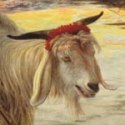
[ The following entry provides a brief discussion about the role of the "two goats" used in the Yom Kippur service as described in this week's Torah reading (Acharei Mot). Note once again the connection between Passover and Yom Kippur.... ]
04.14.11 (Nisan 10, 5771) This week's Torah portion (Acharei Mot) focuses on the solemn occasion of Yom Kippur (the "Day of Atonement"), which (among other things) included the mysterious rite of the se'ir mishtale'ach - the "sent goat" (a term later translated into English as "scapegoat" by William Tyndale). During a special "lottery," Aaron selected two male goats over which lots were to be drawn. Both goats were to be unblemished, healthy, and as much alike as possible. On one lot was inscribed "for the LORD" (לַיהוָה) and on the other was inscribed "for Azazel" (לַעֲזָאזֵל). After the lot was selected, the goat designated "for the LORD" was to be slaughtered as sin offering for the people, whereas the other goat was marked with a red band around its horns and left at the gate of the Tabernacle courtyard. Later in the service, Aaron would confess the sins of the entire community of Israel over this goat, which would then be "sent to Azazel" in the desert (Lev. 16:5-10; 21-22). Notice that in some ways the ritual of the "two goats" of the Yom Kippur service was similar to the ritual of the "two birds" used for the cleansing of the leper we saw earlier in parashat Metzora, since in both cases the focus was on purification from uncleanness (tumah) secured through the mediation of a priest...
The sending away of the goat "to Azazel" is regarded as one of the central rites of the entire Yom Kippur service, though it has puzzled many of the traditional Jewish commentators. The sages ask how the idea of ritually "transferring" the sins of the people onto a goat can be reconciled with the Torah's clearly expressed commandments that each person has a moral duty to undergo teshuvah and take responsibility for his or her own actions... In light of this paradox the sages wonder why the Torah commands that on the holiest day of the year a "scapegoat" for sins should become the focal point...
While many Christian scholars think "Azazel" comes from the verb azal (אָזַל), meaning to "go away" (i.e., to banish), the Jewish sages generally regarded the name as a reference to a geographical location of some kind, perhaps to a mountainous region with precipitous cliffs (Bavli Yoma 67b). According to Jewish tradition, the "designated man" assigned to run the goat away from the camp would go to this location to push the goat off a cliff to its death (Lev. 16:21-22). But notice that the idea of killing the goat is a Rabbinical fiction, since the Torah simply states that the goat should be "sent away" (וְשִׁלַּח) into the wilderness. After all, if the animal was meant to be killed as a sacrifice for sin, why wasn't it slaughtered at the Tabernacle, as was required for all other sin offerings? Moreover, it is clear that the goat was not intended to be a sacrifice offered to "Azazel" or some other angelic being, since the Torah repeatedly forbids such acts of idolatry (e.g., Lev. 17:7).
According to Maimonides, "Azazel" symbolically represented the "extreme" point of being "outside of the camp," and the goat's exile was intended to instill fear that the same fate awaited those who refused to repent. Other commentators have said that since some of the Israelites made offerings to demons (i.e., se'irim [שְׂעִירִם], the same word for "goats"), the rite of the "sent goat" was intended to destroy the idolatrous impulse of the people (Lev. 17:7). Still others have suggested that the two goats represented the struggle between Jacob and Esau, who were similar in appearance but had very different destinies. Jacob represented holy sacrifice (i.e., the goat "for the LORD" at Zion) whereas Esau represented exile (i.e., Mount Seir, the "mountain of goat"). The midrash states that the "sons of god" (בְּנֵי־הָאֱלהִים) who intermarried with human women (Gen. 6:1-2) were actually two angels - Aza and Azael - who originally asked God to allow them to enter human history to prove their loyalty. These two angels rebelled, however, and introduced gross perversions into the human family, and the "sent goat" was therefore offered to atone for the sins of gross sexual perversions and other horrendous evils. Most of the sages regard this midrash as an allegory intended to warn against sexual sin, and therefore the description of the Yom Kippur service is immediately followed by a list of forbidden sexual relationships (Lev. 18).
Finally, a few commentators have suggested that the ritual of the sent goat was a sort of "concession" made to the devil. They argue that the name "Azazel" refers to a name of a particular demon (perhaps even of the devil himself) that was associated with the wilderness regions (see Matt. 4:1). Instead of allowing illegitimate sacrifices made to the "goat demons" (Lev. 17:7), the ritual of "banishing the goat" acknowledged the power of spiritual darkness, and constituted a repudiation of "the force that rules desolate places, whose power is revealed in bloodshed, war, destruction, and under whose authority are the demons, the se'irim, the he-goats" (Nachmanides, Moreh Nevuchim). "Azazel" therefore represents the dread of sin and evil, which is regarded as essential to genuine teshuvah, and the "banishing of the goat" is symbolic of the need to resist the power of the devil... The ritual of the sent goat is therefore not intended to "appease the devil" but is meant to banish impurity and perversity from the community in order to avoid offending the LORD. After all, the goat was not sacrificed but rather sent away from the Presence of God...
The author of the Book of Hebrews writes, "When the Messiah appeared as Kohen Gadol (high priest) of the good things to come, then, through the greater and more perfect Tabernacle which is not made with human hands (that is, not of this creation), he entered into the Kodesh Kodashim (Holy of Holies) once and for all - not by means of the blood of goats and calves but by means of his own blood, thus securing for us eternal redemption" (Heb. 9:11-12). The Levitical system of worship was a shadow of a greater reality to come, since "it is impossible (ἀδύνατος) for the blood of bulls and goats to take away (i.e., ἀφαιρέω, used to translate the Hebrew כָּרַת, to "cut off") sins" (Heb. 10:4).
In light of the ministry of Yeshua as our great High Priest of the New Covenant, we understand the blood of the sin offering "to the LORD" to represent the blood of atonement that was shed upon the cross for our purification from sin, whereas the offering made "to Azazel" represents the additional aspect of removing of our sins far "outside the camp." Just as both of the goats of the Yom Kippur ritual constituted a single offering made to God (i.e., Lev. 16:5 states "he [Aaron] shall take ... two male goats for a (singular) sin offering"), so the sacrifice of Yeshua represents two aspects of a single offering before God. The blood of the first goat was given "to the LORD" for atonement, but the exile of the second goat was given to banish sins from the Divine Presence. Likewise Yeshua served as both our atoning sacrifice before the Father and as our "scapegoat" who "carries away our sins" (Isa. 53:4, 5; Matt. 8:17; 1 Pet. 2:24). The "sent away goat" represents the separation from God that Yeshua experienced on our behalf as He bore the wrath of God in our place... Because of the Messiah's sacrifice, our sins are now put away "as far as the east is from the west" and are forever buried in the bottom of the sea, never to be remembered again (Psalm 103:12; Mic. 7:19; Isa. 38:17; Jer 31:34). Yeshua is both our Sin Offering whose blood cleanses us from sin as well as our "Scapegoat" who forever banishes our sins from God's holy Presence. Bless His Holy Name...
Note: Jewish tradition states that Yom Kippur is the date when Moses received the second set of Ten Commandments, after the first set were shattered when Moses descended Mount Sinai. This second set of tablets foreshadowed the surpassing glory that would be later revealed in the New Covenant of Yeshua. For more on this subject, see parashat Ki Tisa and the various other articles on this site, including "The Eight Aliyot of Moses," and "The Surpassing Glory - Paul's Midrash of the Veil of Moses," and so on.
 |
Parashat Acharei Mot - אחרי מות
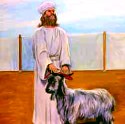
[ The following provides a brief overview of this week's Torah reading (Acharei Mot), which is traditionally read during the season of Passover. The "life is in the blood...." ]
04.13.11 (Nisan 9, 5771) This week's Torah portion moves from the preceding instructions regarding ritual purity (tahora) to recall the earlier tragic incident of Nadab and Abihu, the two sons of Aaron who were killed when they offered "strange fire" upon the Altar of Incense during the dedication of the Tabernacle (Lev. 10:1-2). Because these priests came close to the Holy Place in an incorrect manner and were killed, the LORD further instructed Moses to tell Aaron that he should enter the Holy of Holies only in the prescribed manner once a year, during Yom Kippur (i.e., the "Day of Atonement").
On this solemn day, considered the holiest of the year, Aaron was instructed to perform special purification rituals which would atone for the sins of Israel. Unlike any other priestly functions performed throughout the year, part of the avodah of Yom Kippur was performed within the Kodesh Ha-kodashim (i.e., the Holy of Holies) itself, which the sages called avodat penim (the "inner" service). The other part of the service was called avodat chutz, the "outer service." During the "outer" parts of service, Aaron was required to wear the regular High Priestly garments, called bigdei zahav (the "golden garments," because they were made using gold threads), and during the "inner" part of the service he was required to wear four linen garments called bigdei lavan, the "white garments," instead.
At the start of the Yom Kippur avodah, Aaron was instructed to remove his "golden garments" and to immerse himself in a mikveh. Next he would clothe himself in the white linen garments (symbolizing humility), slaughter a bull for a personal sin offering, and collect its blood in a special basin (which he brought into the Holy Place). Aaron then went back to the courtyard, took a shovelful of embers from the Copper Altar, and returned to the Holy Place to gather some holy incense (ketoret) from the Golden Altar. After this, Aaron first approached the Holy of Holies and went past the veil (parochet) to enter the inner sanctuary, where he carefully burned two handfuls of ketoret to fill the chamber with thick smoke. He then left the Holy of Holies to bring the basin of blood from the sin offering and re-entered the inner chamber to sprinkle the blood once upward and then seven times downward before the kapporet ("Mercy Seat") of the Ark.
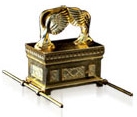
Two goats - similar in every respect - were selected earlier and were waiting in the courtyard of the Tabernacle. Aaron was instructed to "draw lots" to identify the purpose for each goat. One lot was inscribed "for the LORD" (לַיהוָה) and the other was inscribed "for Azazel" (לַעֲזָאזֵל). After the lottery, the goat designated "for the LORD" was slaughtered as sin offering on behalf of the people and its blood collected in a basin, whereas the goat "for Azazel" was marked with a red band around its horns and left at the gate of the courtyard. Later in the service, Aaron would confess the sins of the community of Israel over the this goat, which would then be "sent to Azazel" in the desert (Lev. 16:5-10; 21-22). For this reason, the other goat is called se'ir mishtale'ach - the "sent goat," which was translated into English as the "scapegoat" by William Tyndale....
After Aaron slaughtered the goat for the people's sin offering, he repeated the same procedure he had performed earlier for his personal sin offering. Aaron brought the blood of the goat "for the LORD" before the Ark of the Covenant in the Holy of Holies and sprinkled it once upward and then seven times downward before the kapporet. After doing this, Aaron combined the sacrificial blood of the goat and the bull into another basin and applied this mixture to the corners and top of the Golden Altar of Incense.
Later, the fat and entrails of both the bull and the goat were burned on the Copper Altar in the courtyard, though the hide and the flesh of both were taken out of the Tabernacle to be entirely burned outside the camp.
After purifying the Tabernacle, Aaron returned to the gate of the courtyard and laid both hands upon the head of the other goat (designated "for Azazel" [לַעֲזָאזֵל], a name that may refer either to the accusing angel or to a mountainous location) and confessed all of the sins and transgressions of the people. This "scapegoat" was not slaughtered, however, but was driven away into exile in the wilderness, carrying "all their iniquities unto a land not inhabited" (Lev. 16:22). Aaron next returned to the Tent, immersed himself in a mikveh, and changed back into "golden clothes." He then proceeded to offer two whole burnt offerings – one for himself and one for the people – to complete the purification process. After these sacrifices, Aaron underwent yet another mikveh, changed back into his white linen garments, and removed the censer of burnt incense from the Holy of Holies. Finally he changed back into his golden garments to finish his evening work as the High Priest. Aaron would offer the regular evening offerings, kindle the lamps of the Menorah, burn incense on the Golden Altar, and so on.
This elaborate ritual was ordained to be a decree (chok) for Israel, and the day of Yom Kippur was to be observed every year as a time of "affliction and mourning" for all the people. In three separate passages in the Torah, the people are told "the tenth day of the seventh month" (Tishri) is the Day of Atonement (יוֹם הַכִּפֻּרִים). It shall be a sacred occasion for you: you shall afflict your souls" (Lev. 16:29-34, 23:26-32, Num. 29:7-11).
The portion ends with further instructions about making sacrifices, including the prohibition against offering any animal sacrifices apart from the rites of the Tabernacle. The consumption of blood was explicitly forbidden, since blood was reserved for sacrificial purposes upon the altar. Finally, the portion presents a list of forbidden sexual relationships, concluding with the general prohibition against following the abhorrent practices of other nations.
Yom Kippur and the Gospel
Note: For more about the relationship between Passover and Yom Kippur, see the article entitled, Yom Kippur and the Gospel.
 |
Taking Passover Personally
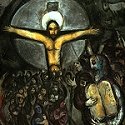
[ The following entry is related to the holiday of Passover, which begins Monday, April 18th at sundown this year... ]
04.13.11 (Nisan 9, 5771) The sages teach: b'chol dor vador - in each and every generation an individual should look upon him or herself as if he or she (personally) had left Egypt. It's not enough to recall, in some abstract sense, the deliverance of the Jewish people in ancient Egypt, but each Jew is responsible to view Passover as a time to commemorate their own personal deliverance from bondage to Pharaoh.
b'khol-dor va·dor chai·yav a·dam li·rot et-atz·mo ke·i·lu hu ya·tza mi-mitz·ra·yim
"In each and every generation a man should look upon himself
as if he (personally) had left Egypt."
The kavanah (inner intention of the heart) for the observance of Passover is summed up well by this simple phrase: B'Khol-dor vador. As we partake of the Seder, we must embrace it as our own -- as if we were personally there (in Egypt, at the foot of the Cross) and understand that this mighty redemption was accomplished for my sake, as well as for yours... We recall the words, bishvili nivra ha'olam -- "For my sake was this world created," while we also recall the words, anokhi afar ve'efer -- "I am but dust and ashes."
For Messianic believers, kavanah refers to our apprehension of the ultimate deliverance from the bondage of sin and death through the grace and love of the Mashiach Yeshua -- the true Korban Pesach (Passover Offering). "And when I see the blood, I will pass over you" - וְרָאִיתִי אֶת־הַדָּם וּפָסַחְתִּי עֲלֵכֶם (Exod. 12:13). The ultimate meaning of Passover is revealed at the cross of the Messiah...
Were you there, at the Cross, where Yeshua died for your sins?
 |
There is no Passover
Without the Lamb...

[ The following entry is related to the holiday of Passover, which begins Monday, April 18th at sundown this year... ]
04.12.11 (Nisan 8, 5771) Technically speaking, while Passover (Pesach) is a one day holiday that recalls the deliverance of the LORD by means of the blood of lamb, practically speaking it lasts for an entire week, since the LORD repeatedly commanded that only unleavened bread was to be eaten for seven days beginning with the Passover Seder (Exod. 12:14-20; 13:6; Lev. 23:6; Num. 28:17). In other words, both Passover and the "Feast of Unleavened Bread" are combined, and the first "official" eating of matzah occurs during the "Motzi Matza" step of the Passover Seder. Note that unleavened bread is first mentioned in the Torah in connection with Abraham, who served the three angels under the oak trees of Mamre. Abraham instructed Sarah to "make ready quickly three measures of fine meal, knead it, and make uggot matzot (עֻגוֹת מַצּוֹת) - "circles of cakes" (Gen. 18:6).
According to Jewish tradition, these seven days commemorate the time between the first Passover in Egypt (on Nisan 15) and the splitting of Sea of Reeds (on Nisan 21), and therefore they mark the process of "going out from Egypt" (i.e., yetziat mitzraim: יְצִיאַת מִצְרַיִם). Since there was not enough time for the dough to rise, the matzah symbolizes the "bread of affliction" (i.e., lechem oni: לֶחֶם ענִי) that our ancestors ate as they fled the horrors of oppression (Exod. 12:39). As I've mentioned elsewhere, chametz is a symbol of death and decay, and its removal symbolizes escape from the world and its corrupting influences....
The first and last days of Passover are Sabbaths when no work (melakhah) is permitted, whereas the "intermediate days" (days 3-6) are called Chol HaMo'ed and only essential work is permitted. In the Diaspora, Passover is celebrated for an additional day (yom tov sheni), and the Passover Seder is held on the first two nights (i.e., Nisan 15 and Nisan 16), though in Israel there is only one Seder on the 15th of Nisan. For more about this, see "When does Passover Begin?"
The Passover Lamb, called korban Pesach (קרבן פסח), is the focal point of this holiday, since without the lamb, there would have been no redemption (i.e., ge'ulah: גְּאֻלָּה) and therefore no deliverance (i.e., yeshuah: יְשׁוּעָה) from Egypt. The Presence of the Lamb of God (i.e., Seh haElohim: שֵׂה הָאֱלהִים) is therefore essential to the meaning of this holiday... After the destruction of the Second Temple, however, Rabbinical Judaism redefined the Seder to function as a "ceremonial replacement" for the Torah's commandment to eat the sacrificed lamb (actually, lamb is one of the foods traditionally not eaten during a modern Seder, though the ze'roa, or roasted shank bone, is included as a reminder of its importance). The Rabbis then developed fifteen distinct steps in the traditional Seder, though it should be stressed that many of these steps were observed during the time of Yeshua.

Passover is the only festival that the LORD made special provision so that if someone missed the occasion (on account of illness, ritual impurity, or some other valid reason), he or she could make it up 30 days later on Iyyar 14 (May 8th, 2009) (Num. 9:9-12). This is called Pesach Sheni. God wants His children to observe this festival, chaverim...
In addition to getting the house ready for Passover (by removing all traces of chametz), it is customary to give money to the poor to help them enjoy this sacred time. Funds set aside are sometimes called Ma'ot Chittim, "coins for wheat" (מַעוֹת חִטִּים) and are given as tzedakah for the less fortunate.

For more information about Passover, please see the Passover Pages, starting here.
Worthy is the Lamb who was slain!
רָאוּי הַשֶּׂה הַטָּבוּחַ לְקַבֵּל גְבוּרָה
עשֶׁר וְחָכְמָה וְכּחַ וִיקַר וְכָבוֹד וּבְרָכָה
ra'uy ha·seh ha·ta·vu·ach le·ka·bel ge·vu·rah,
o·sher ve·chokh·mah, ve·ko·ach vi·kar, ve·kha·vod uv·ra·kha

"Worthy is the Lamb who was slain, to receive power and wealth and wisdom
and might and honor and glory and blessing" (Rev. 5:12)

Download Reading Card
Note: It is customary to review the Passover Haggadah in the afternoon of Shabbat HaGadol to become prepared for the upcoming Seder. To help you do this, you can download a free Seder Guide here.
Self-Examination and Passover
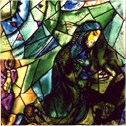
[ The following entry is related to the holiday of Passover, which begins Monday, April 18th at sundown this year... ]
04.12.11 (Nisan 8, 5771) Shalom Chaverim... Though we are indeed "eager to keep the feast" of Passover this year (1 Cor. 5:7-8), we are saddened that many Christian friends are beginning to think of "Easter" (a name that derives from the pagan fertility goddess Ishtar) instead of the Passover Seder that Yeshua used to commemorate our deliverance... Like many of you, this creates a sense of "disconnect" for us, and we yearn for the day when we are all united in the truth of Yeshua our Mashiach. Maran Atah!
Notice that the passage quoted above (i.e., 1 Cor. 5:7-8) also commands us to perform our own bedikat chametz - or search for leaven in our lives... Among other things, chametz (leaven) represents the natural egocentricity ("flesh") that manifests itself as "swollen sourness" in our lives... Since "a little leaven leavens the whole lump," we are called to purge ourselves and become a "new substance" untainted by the sour and rotting influences of our pasts. Since Yeshua has been sacrificed as our Passover Lamb, we are to regard ourselves as new creations, made "unleavened" by the power of the Holy Spirit. Therefore we are told to "put away" the old nature - the yetzer ha'ra (evil inclination) - and purge the old influences that inwardly canker and make us sick. In other words, since we are now "new dough" made free from the corrupting power of sin by the grace of God, we should be on guard not to allow the secretive influences of "leaven" back into our lives. (A little leaven leavens the whole lump.) We are made holy and clean by the sacrifice of the true Lamb of God Himself and our lives should reflect that truth... May God help us all walk without hypocrisy in our lives. Amen.
חָקְרֵנִי אֵל וְדַע לְבָבִי
בְּחָנֵנִי וְדַע שַׂרְעַפָּי
וּרְאֵה אִם־דֶּרֶךְ־עצֶב בִּי
וּנְחֵנִי בְּדֶרֶךְ עוֹלָם
chok·re·ni · el · ve'da · le·va·vi
be·cha·ne·ni · ve'da · sar·a·pai
u·reh · im · de·rekh · o·tzev · bi
u'ne·che·ni · be·de·rekh · o·lam

"Prove me (δοκιμάζω), O God, and know my heart!
Test me and know my concerns!
And see if there be any idolatrous way in me,
and lead me in the way everlasting!"
(Psalm 139:23-24)
δοκίμασόν με ὁ θεός καὶ γνῶθι τὴν καρδίαν μου
ἔτασόν με καὶ γνῶθι τὰς τρίβους μου
καὶ ἰδὲ εἰ ὁδὸς ἀνομίας ἐν ἐμοί
καὶ ὁδήγησόν με ἐν ὁδῷ αἰωνίᾳ (LXX)
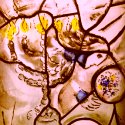
Shame and Acceptance
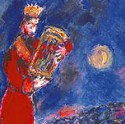
[ The following entry is related to the holiday of Passover, which begins Monday, April 18th at sundown this year... ]
04.11.11 (Nisan 7, 5771) When David cried out, "Let me not be put to shame (אַל־אֵבוֹשָׁה), let not my enemy triumph over me" (Psalm 25:2), the Ruach HaKodesh shows us the link between shame (בּוּשָׁה) and defeat (תְּבוּסָה). Just as we are made tzaddikim by trust, so we are made rasha'im by shrinking back in shame and fear. In the realm of the Spirit, there is nothing more important than accepting that you are accepted by God...
Passover is about our freedom (חֵרוּת) and deliverance (יְשׁוּעָה), but shame is a form of slavery (עַבְדוּת) and degradation. Shame is the spirit of Pharaoh's cruel bondage of the Israelites. Indeed, during the great Exodus, many Jews were left behind in Egypt because they could no longer find hope... The Mekhilta asks, "When did they die? During the three days of darkness, as it says, 'People could not see each other' (Exod. 10:23). These were people who no longer held hope... The Shemot Rabbah further explains that "There were sinners among the Jews who had Egyptian patrons, and they had wealth and honor there, so they didn't want to leave." In other words, they did not wish to "trade flesh-pots for freedom" and therefore they shamefully died during the plague of darkness.
As we consider these matters, however, it is essential to realize that underlying the events surrounding deliverance is the great theme of faith (אֱמוּנָה). This theme is our response to God's redemptive love and saving acts performed on our behalf. God's love is the question, and our response - our teshuvah - is the answer. The great command is always to "Choose life!" We must chose to turn away from the darkness to behold the Light (for more on this subject, see "Choosing to Belong").
May this Passover Season be a time in which you are renewed in your hope and set free from your fears.... May you "find your place at the table" and accept the truth of your worth before the LORD God of Israel.
 |
Shabbat HaGadol - שבת הגדול

[ This coming Shabbat is called Shabbat HaGadol, which is the Sabbath immediately preceding the holiday of Passover. ]
04.10.11 (Nisan 6, 5771) In Jewish tradition, the Sabbath that occured just before the first Passover was gadol, or "great." According to the Talmud, the Exodus occurred on Thursday, Nisan 15th, thus making the 10th of that month a Shabbat. It was on Nisan 10 that God commanded the families of Israel to obtain a lamb for sacrifice and to bring it to their homes to be Korban Pesach (קָרְבָּן פֶּסַה) - the Passover lamb - that would be sacrificed on Nisan 14th (Exod. 12:1-6).
One of the major Egyptian gods was the sheep (or the ram god Amun), so this Shabbat is considered "gadol" (great) because God miraculously allowed the Israelites to take lambs from among the Egyptians despite the humiliation of their deity (Orach Chaim 430:1). According to midrash, the Israelites explained that they intended to sacrifice these lambs by the LORD's command, who would then destroy the firstborn of Egypt. When the Egyptian firstborn heard this they begged their fathers to let the Israelites go, but their cries were ignored until a civil war broke out in which many Egyptians were killed (Tosafot Shabbat 87b). This internecine warfare is called the "War of the Firsborn" and is considered a great miracle that helped deliver the Israelites from slavery in Egypt.
Shabbat HaGadol foreshadowed the offering of the Mashiach Yeshua as Seh Elohim, the Lamb of God, who takes away the sins of the world. Messianic Jews regard Shabbat HaGadol as the time when Yeshua made His triumphal entry into Jerusalem riding on a donkey to announce His Messiahship (at approximately the time the korban Pesach was being selected for the sacrifice). Examined for four days before His sacrifice (execution) for the sins of the world, He was found to be the true Lamb of God without spot or blemish.
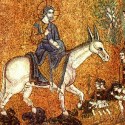
The Haftarah for Shabbat HaGadol (Malachi 3:4-24) foretells of Yom Adonai (יוֹם יהוה) and the return of Yeshua to Zion as Mashiach ben David.
Shabbat HaGadol is traditionally one of two times during the year that a noted Torah sage would address the congregation (usually regarding the laws of Passover). The other occasion was Shabbat Shuvah -- the Sabbath of Repentance -- between Rosh Hashanah and Yom Kippur. For more information, click here.
Note: If the miracle occured on Nisan 10th, then why don't we celebrate this as its own holiday? According to Jewish tradition, the prophetess Miriam (the sister of Moses) died on Nisan 10, exactly one year before the Israelites entered the Promised Land (i.e., 40 years after the Exodus), and therefore Shabbat HaGadol is commemorated on the Shabbat before Passover rather than on the calendar date of Nisan 10 itself.
Preparing for Passover
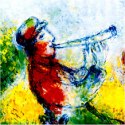
[ The following entry is related to the holiday of Passover, which begins Monday, April 18th at sundown this year... ]
04.10.11 (Nisan 6, 5771) The beginning of the Biblical Year (called Rosh Chodashim) began on Monday April 4th at sundown (i.e., Nisan 1). We are now in a state of preparation for the holiday of Passover, which begins Monday, April 18th at sundown (first seder):
 |
As I mentioned last week, Passover is really a month long celebration. Over and over it is referred to as the "month of spring" (חדֶשׁ הָאָבִיב), the "month of redemption," the month of Nisan, and so on. The word Nisan (נִיסָן) itself might come from either the word nitzan (נִצָּן), meaning "bud" (Song 2:12), or the word nissim (נִסִּים) meaning "miracles," both of which suggest physical and spiritual resurrection in our lives. Others think the word comes from the verb nus (נוּס), meaning "to flee," both in relation to Israel's flight from Egypt and Egypt's flight from Israel (i.e., when the pursuing Egyptian cavalry fled (נָסִים) before the sea closed upon them (Exod. 14:25, 27). We also see this usage in the verse: "The wicked flee (נָסוּ) when no one pursues, but the righteous are bold as a lion" (Prov. 28:1). The devil's power is found in the lie. If he can make you afraid, you will not think clearly. Establishing your faith in the truth will embolden you to deal with the lies and distortions that are intended to enslave you in fear. As Yeshua said, the truth will set you free (John 8:32).
 |
New "Table Talk" for Metzora

[ The following is related to this week's Torah reading (Metzora). Please read the Torah portion to "find your place" here. ]
04.04.11 (II Adar 29, 5771) Chodesh Tov and Shana Tovah, chaverim! Today I wrote a Shabbat "Table Talk" for this week's Torah portion (Metzora), which is the fifth portion of the Book of Leviticus. Like other Table Talk guides, I first provide a brief synopsis of the reading and then ask some provocative discussion questions. I hope you find it useful for discussing this week's Torah portion, chaverim. You can download the page here.
IMPORTANT NOTE:
I am taking a very needed "sabbatical" from my work from Monday afternoon until Saturday night. Please understand that I will be UNABLE to answer email during this time. It is my prayer that my family and I enjoy a restful, peaceful time together. Thank you all so much...
Cleansing of the "Leper"
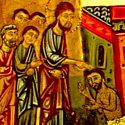
[ The following is related to this week's Torah reading (Metzora). Please read the Torah portion to "find your place" here. ]
04.04.11 (II Adar 29, 5771) Although the priest needed to go "outside the camp" to examine a metzora (i.e., "leper"), the person still needed to "be brought" to the priest to meet him there (Lev. 14:2-3). In other words, the afflicted one was required to meet the priest "half-way." Hashivenu (הֲשִׁיבֵנוּ): "Return us to You, LORD, and we shall return" (Lam. 5:21). Like the prodigal son who returns home, God waits for us at the "edge" of the camp to meet us half-way...
The case of the metzora reveals that God sometimes disciplines his child with "exile" in order to awaken teshuvah ("repentance") within the heart. God imparted the spiritual disease of tzara'at to "remind" us of our sin and need for atonement, and the purification ritual was meant to illustrate our need for spiritual rebirth.... The gracious aim of affliction, then, is to "wake us from our slumbers" in order to reveal the way of life... As C.S. Lewis once said, "God whispers to us in our pleasures, speaks to us in our conscience, but shouts in our pains: It is His megaphone to rouse a deaf world."
A student once asked his rebbe: "Do we get punished for our sins in this world?" His succinct response was, "Only if we are made fortunate..." Paradoxically, punishment from God may be a blessing in disguise, since there is no worse state in this life than to be untouched by need, suffering and testing; there is nothing more dreadful than to be forgotten or overlooked by God (Rom. 1:28). Being afflicted with "tzara'at" is a blessed state, since it reveals the nature of our lethal disease - and leads us back to the "edge of the camp" where God gives us healing....
As I have mentioned before, Jewish tradition links tzara'at with the sin of lashon hara, suggesting that the word metzora itself is a "play" on the Hebrew phrase, motzi ra: "one who brings forth [speaks] evil." Mavet v'chaim b'yad lashon (מָוֶת וְחַיִּים בְּיַד־לָשׁוֹן) - "Death and life and in the power of the tongue" (Prov. 18:21). Because we are made in the image and likeness of God, our words matter -- and they wield power. Indeed, the Hebrew word for "word" (דָּבָר) also means "thing." When we bless others, we are invoking grace and good will to be manifest in the world, but when we curse others, the opposite effect is intended... There is a connection here with the case of the metzora, whose fate rested upon a single word spoken by the priest: "unclean" (טָמֵא) or "clean" (טָהֵר). (For more on this subject, see "Teshuvah of the Tongue").
There really are no "careless" words. Yeshua said, "I tell you, on the day of judgment people will give account (ἀποδίδωμι) for every careless word they speak, for by your words you will be justified, and by your words you will be condemned" (Matt. 12:36-37). Every word we utter reaches up to the highest places of heaven and echoes there. The sages say, "my words - not a soul knows." But the Holy One, blessed be He, says, "I am sending an angel who will stand near you and record every word you say about your neighbor." Every word we speak is recorded in the "heavenly scrolls" (Rev. 20:12). Therefore David admonishes us, "Who desires life (מִי־הָאִישׁ הֶחָפֵץ חַיִּים) and loves many days that bring forth good? Guard your tongue from evil and keep your lips from using deceptive speech. Turn away from evil and do good; seek peace and pursue it" (Psalm 34:13-14). Notice the connection between our words and our deeds here, which again suggests the connection between "words" and "things" (i.e., devarim: דְּבָרִים). It is very sobering to realize that our thoughts are essentially prayers being offered up to God... As David also said (Psalm 35:13): "May what I prayed for happen to me!" (literally, tefillati al-cheki tashuv - "may it return upon my own breast").
Because the metzora was put into exile because of his sinful thinking (i.e., words), so he came back to the "edge of the camp" only with words... This first step back was crucial, as the prophet later said, "Return to the LORD and repent! Say to him: 'Completely forgive our iniquity; accept our penitential prayer, that we may offer the praise of our lips as sacrificial bulls'" (Hos. 14:2). When we sincerely return to the LORD, He will take care of the problem of our impurity, uncleanness, and sin. That's the message of the Cross of Yeshua, too. We can add nothing to His finished work but simply accept it as performed on our behalf through faith...
The love of God is so great that He reached out and touched us - becoming a "leper" for us - and even chose to die "in exile" upon the cross to eternally purify us from our sins... In that sense, Yeshua surely meets us more than "half-way," since He "emptied Himself" (κενόω) of His heavenly glory and power in order to willingly bear our sickness, shame, and even death itself on our behalf... "But [He] made himself nothing (εκενωσεν), taking the form of a slave, being born in the likeness of men; and being found in human form, he brought himself low by becoming obedient to the point of death, even death on a cross" (Phil 2:7-8).
May His Name forever be praised!
 |
Happy New Year!
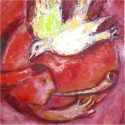
[ The start of the Biblical New Year is Nisan 1st, which this year begins on Monday, April 4th at sundown. Since it marks the beginning of the month of redemption, Rosh Chodesh Nisan marks the beginning of the Passover Season as well... L'Shanah tovah b'Yeshua, chaverim! ]
04.03.11 (II Adar 28, 5771) The world runs on a different "clock" and operates under its own set of mistaken assumptions. The "wisdom of this world" (σοφία τοῦ κόσμου τούτου) is the prevailing cultural spirit that suppresses the reality of God's Presence and truth. Such "wisdom" is regarded as foolishness before God, and God has promised to "seize the so-called wise in their own craftiness" (1 Cor. 3:19). The life of faith, on the other hand, sees what is invisible. Faith (emunah) apprehends "the substance (ὑπόστασις) of things hoped for, the assurance (ἔλεγχος, conviction, "correction," "argument," i.e., tokhachat: תוֹכַחַת) of things not seen" (Heb 11:1). Faith "looks not to the things that are seen but to the things that are unseen. For the things that are seen are transient, but the things that are unseen are eternal" (2 Cor. 4:18).
The beginning of the Biblical year (called Rosh Chodashim) begins on Monday April 4th at sundown this year.... Look for the first sign of the waxing crescent later this week, chaverim. Spring is in the air! It is time to prepare for Passover which begins in just two weeks (on April 18th at sundown):
 |
The commandment to sanctify the new moon of Nisan reveals that it is our responsibility to sanctify (i.e., observe) Biblical time in general. In other words, when we observe "the beginning of months," we are acknowledging that time itself is rooted in the Biblical calendar with its divinely inspired cycle of festivals (i.e., the moedim).
Originally Rosh Chodashim was simply called the "first month" because it is the month of the Exodus and the other months were named in relation to it, similar to the days of the week in the Hebrew calendar (i.e., the first day, the second day...). Later it was called Chodesh Ha-Aviv (חדֶשׁ הָאָבִיב), "the springtime month," because the Biblical calendar is always reset in the spring.
 |
Passover is really a month long celebration of rebirth and freedom. Over and over it is referred to as the "month of spring" (חדֶשׁ הָאָבִיב), the "month of redemption," the month of Nisan, and so on. The word Nisan (נִיסָן) itself might come from either the word nitzan (נִצָּן), meaning "bud" (Song 2:12), or the word nissim (נִסִּים) meaning "miracles," both of which suggest physical and spiritual resurrection in our lives. Others think the word comes from the verb nus (נוּס), meaning "to flee," both in relation to Israel's flight from Egypt and Egypt's flight from Israel (i.e., when the pursuing Egyptian cavalry fled (נָסִים) before the sea closed upon them (Exod. 14:25, 27). We also see this usage in the verse: "The wicked flee (נָסוּ) when no one pursues, but the righteous are bold as a lion" (Prov. 28:1). The devil's power is found in the lie. If he can make you afraid, you will not think clearly. Establishing your faith in the truth will embolden you to deal with the lies and distortions that are intended to enslave you in fear. As Yeshua said, the truth will set you free (John 8:32).
Rosh Chodesh Blessing:
Since Rosh Chodesh Nisan marks the new beginning of the Biblical year, we humbly ask the LORD to help us prepare for the coming month and the season of Passover:
יְהִי רָצוֹן מִלְּפָנֵיךָ יהוה אֱלהֵינוּ וֵאלהֵי אֲבוֹתֵינוּ
שֶׁתְּחַדֵּשׁ עָלֵינוּ חדֶשׁ טוֹב בַּאֲדנֵינוּ יֵשׁוּעַ הַמָּשִׁיחַ אָמֵן
ye·hi ra·tzon mil·fa·ne·kha Adonai E·lo·hey·nu ve·lo·hey a·vo·tey·nu
she·te·cha·desh a·ley·nu cho·desh tov, ba'a·do·ney·nu Ye·shu·ah ha·ma·shi·ach, a·men

"May it be Your will, LORD our God and God of our fathers,
that you renew for us a good month in our Lord Yeshua the Messiah. Amen."

Download Study Card
Our family sincerely wishes you "shanah tovah u'metukah ba'adoneinu Yeshua ha-Mashiach" - a good and sweet year in our Lord Jesus the Messiah! Chodesh tov, chaverim!
Parashat Metzora - מצרע

[ The following is related to this week's Torah reading (Metzora). Please read the Torah portion to "find your place" here. ]
04.02.11 (II Adar 27, 5771) Recall from last week's Torah portion (Tazria) that if someone was diagnosed with tzara'at, they were forced to leave the community and live in a state of exile. The afflicted person (called a "metzora") had to tear his clothes like a mourner, put a shroud over his face (descending to his upper lip) and remain alone. If anyone came near, the person was required to cry out: "Unclean! Stay away! Do not become impure because of me!" While so isolated, the person would have opportunity to perform teshuvah (repentance) and to reexamine his relationship with God.
If the one suffering from tzara'at eventually was healed, he would first call for the priest to be reexamined. If the priest saw no sign of tumah (uncleanness), a second examination was scheduled seven days later, and if it was evident that the person was now free from the disease, the process of tahora (purification) would begin.
The purification process symbolized "rebirth" through sacrifice somewhat similar to the Yom Kippur and Red Heifer rituals. The priest ordered that one of two birds should be slaughtered over the earthen vessel filled with fresh spring water, with its blood mixing with the water. The living bird, along with a piece of cedar, and a hyssop branch were then tied together using scarlet thread, and the entire bundle was dipped into the earthen vessel. The blood and water mixture was then sprinkled seven times on the healed metzora, and the other bird was then set free.
After this, the metzora washed his clothes, shaved off all his body hair, and was immersed in a mikveh (ritual pool for cleansing). A further week of separation followed (similar to niddah) but on the eighth day the person would offers sacrifices. The blood from the asham (guilt) offering was applied to his earlobe, thumb and foot, similar to the blood applied to the priests during their ordination. Oil from a meal offering was sprinkled seven times in the direction of the Sanctuary. In this way the priest "made atonement" for him and he was purified. His life of uncleanness would be over, and he would be like a soul brought back from the dead to newness of life.
Throughout the Scriptures, both water and blood are used as purifying agents. Sacrificed blood is applied to the altar to make atonement for sin (Lev. 17:11; Eph. 2:3; Heb. 9:14) and water is used for cleansing from tumah (e.g., Exod. 30:19-20; Lev. 14:51; Num. 19:18; Heb. 10:22). The prophet Ezekiel foretells the time when God will sprinkle "pure water" on ethnic Israel to cleanse them from all their uncleanness (Ezek. 36:25). Water likewise signifies spiritual rebirth. According to Sefer HaChinuch, immersion in water (mikveh) represents that the unclean person is "recreated," since the world was covered with water during its creation. Yeshua taught that we need a spiritual rebirth in order to see the Kingdom of God (John 3:3), and the purification process of the metzora foreshadowed this "rebirth" by water and by blood (John 3:5; 19:34; Heb. 9:19).
The portion concludes with laws regarding tzara'at detected in a house (and its purification or demolition, as determined by the priests), and laws regarding "bodily discharges" (zuvim) which required purification through immersion in a mikveh and the offering of sacrifices for atonement. "Thus you shall keep the people of Israel separate from their uncleanness, lest they die in their uncleanness by defiling my tabernacle that is in their midst" (Lev. 15:31).
 |
Therefore Choose Life!
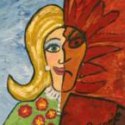
[ The following is related to this week's Torah reading (Tazria). Please read the Torah portion to "find your place" here. ]
04.01.11 (II Adar 26, 5771) In light of the enigma of "spiritual impurity" (i.e., tumah) and its ultimate expression revealed in the corruption of death, it is all the more telling that we should heed the cry of the Spirit: "Choose Life!" (Deut. 30:19). Sin is a type of "spiritual suicide" that seduces us to exchange eternal good for the petty and trivial. The nachash (serpent) in the garden of Eden was the first to speak lashon hara. He slandered God and lied to Eve about how to discern between good and evil. He is a murderer and the father of lies. Resist his wiles with the truth of God...
|







































